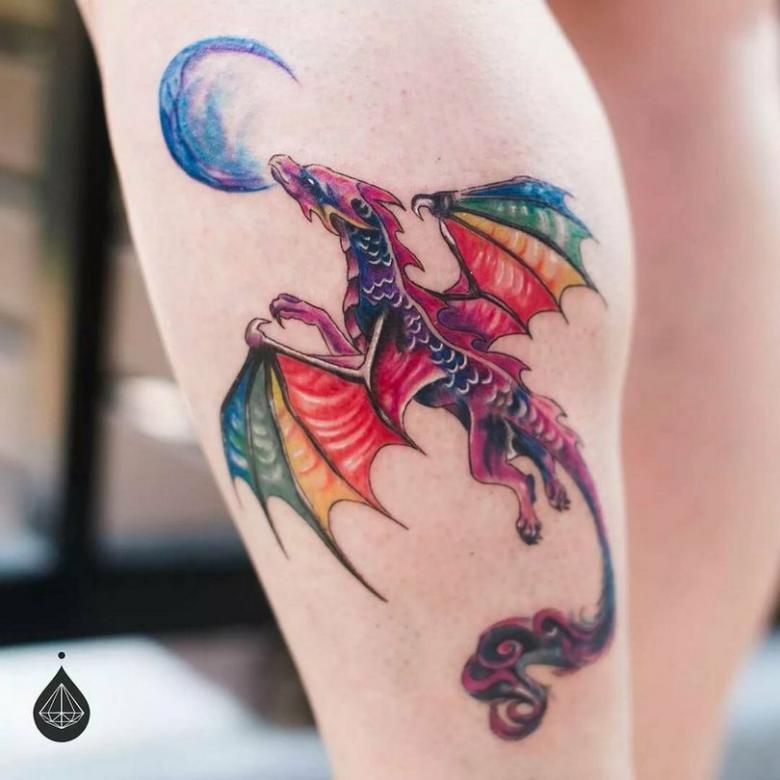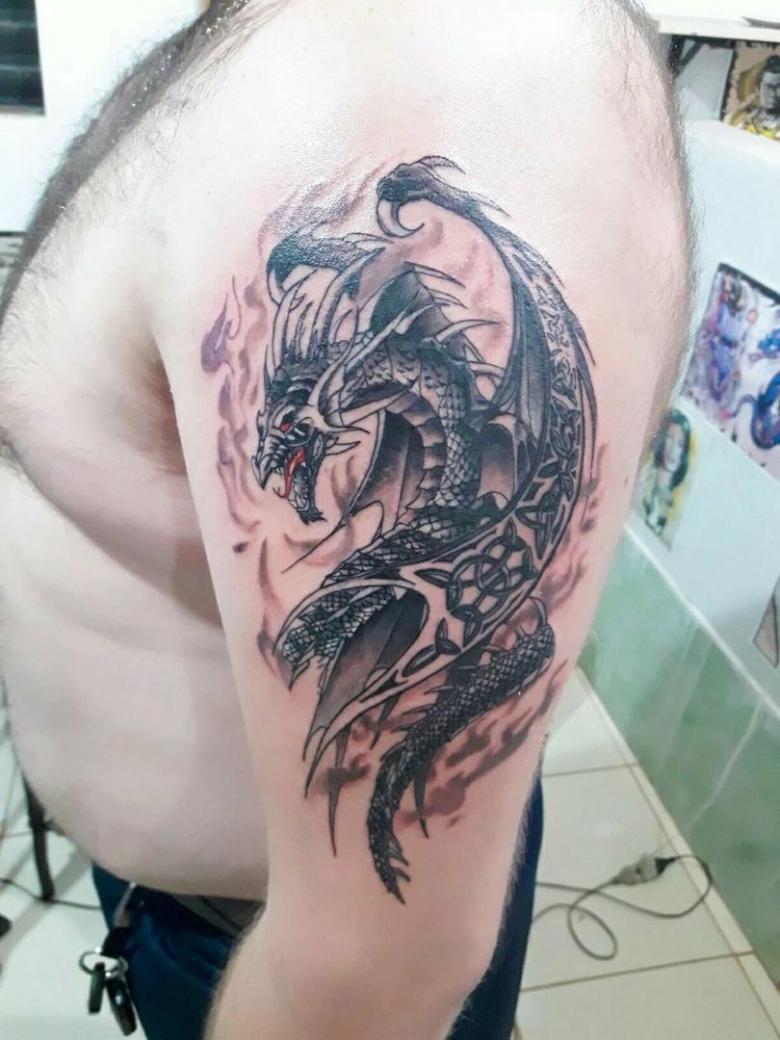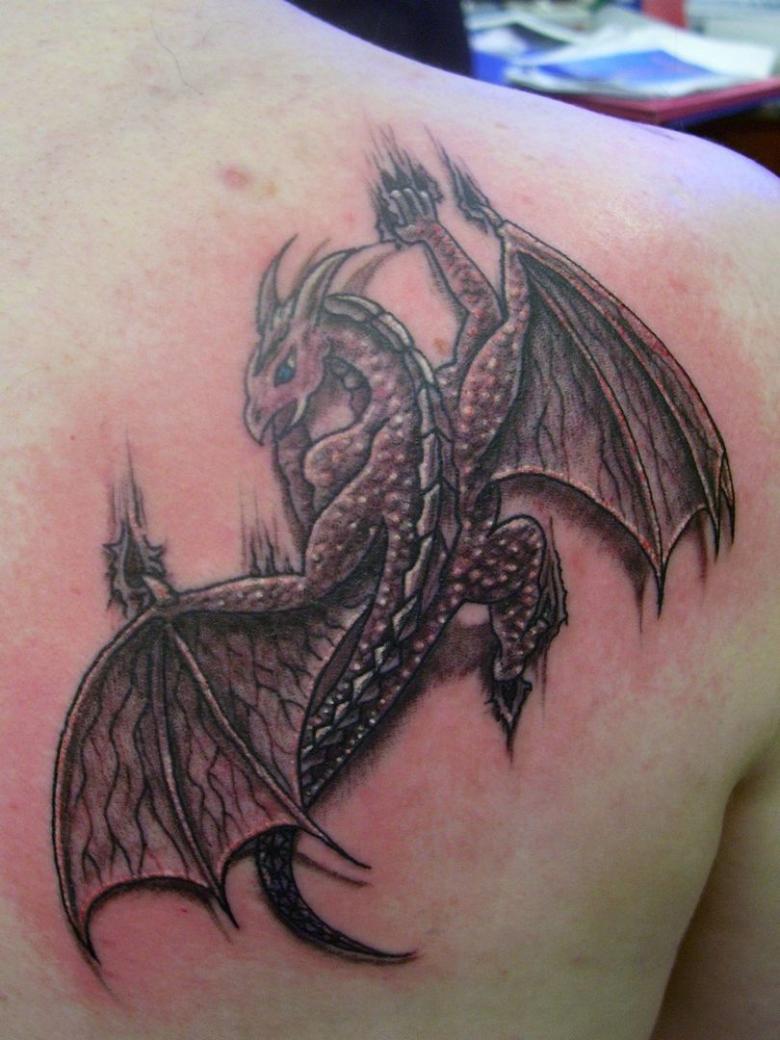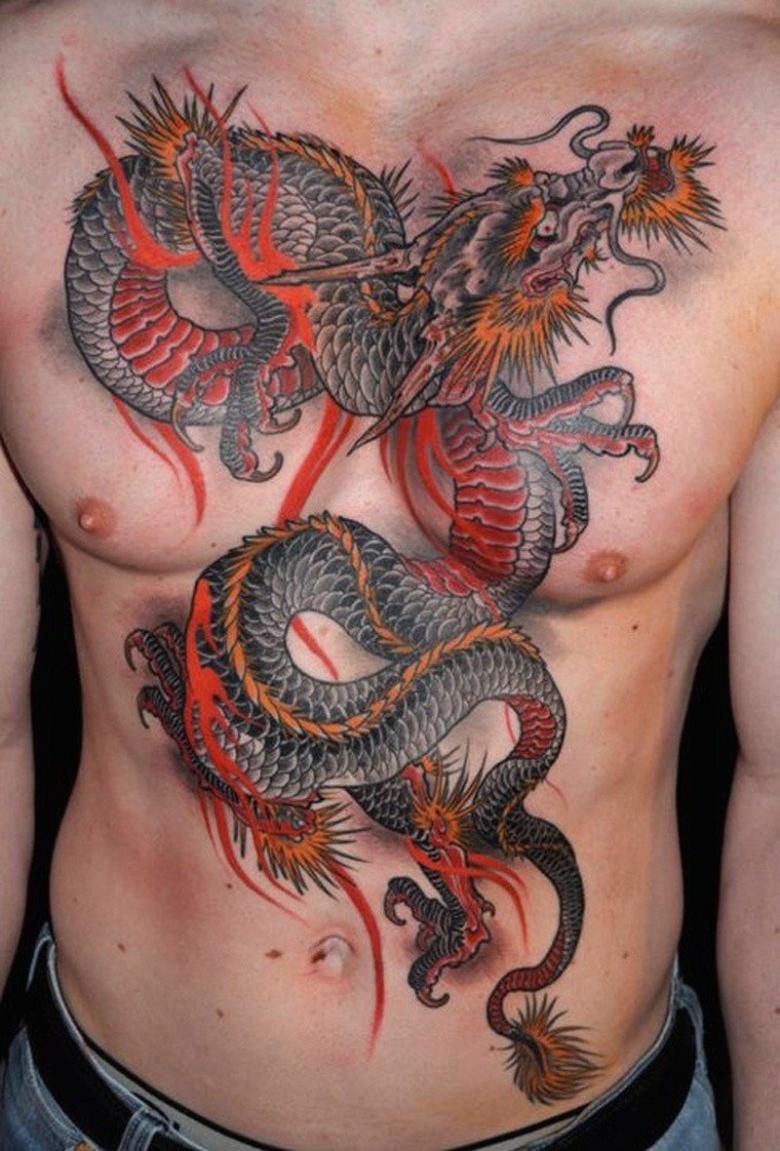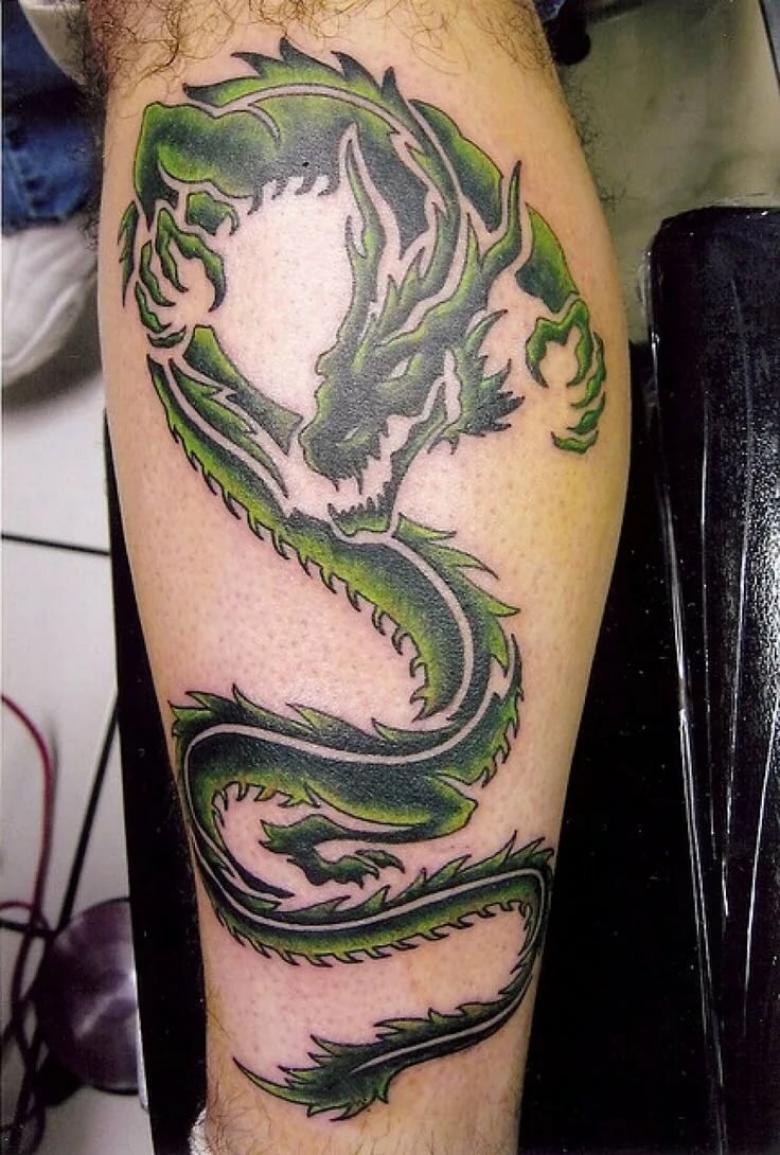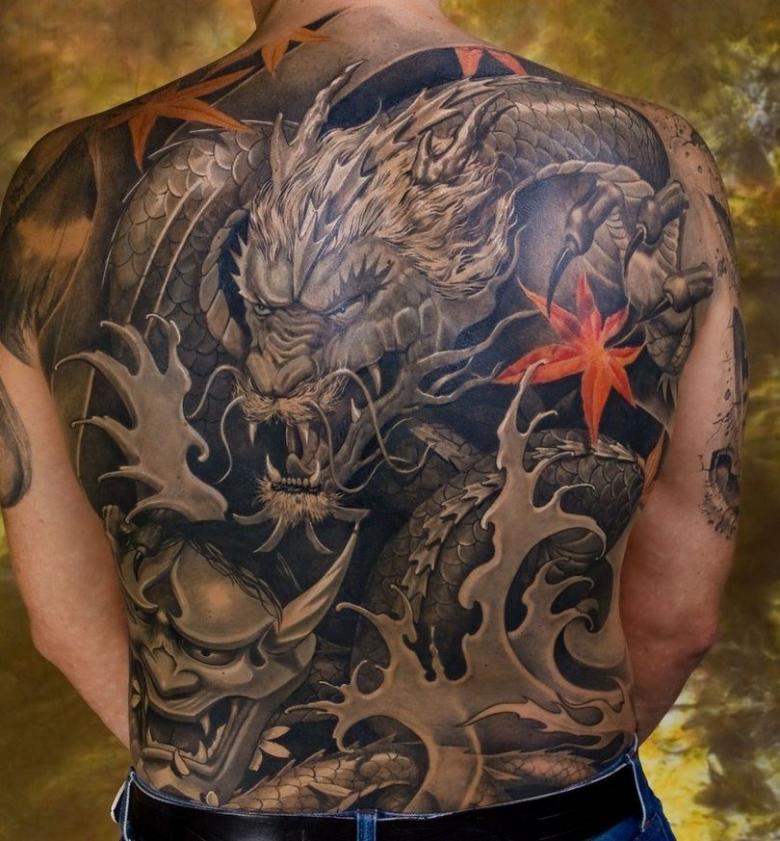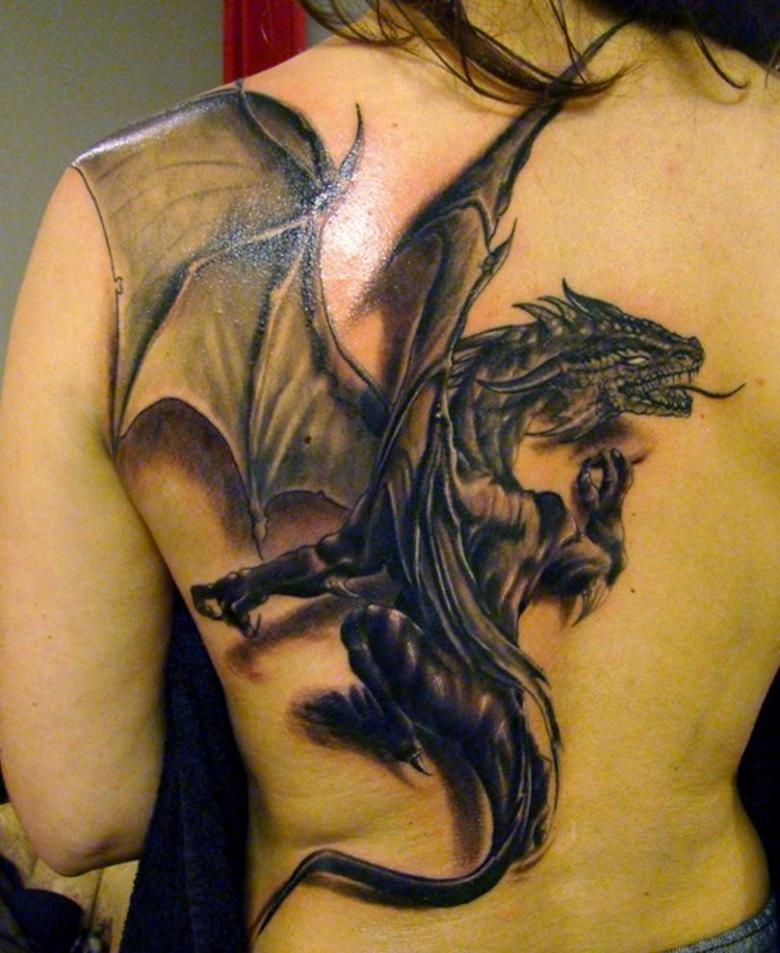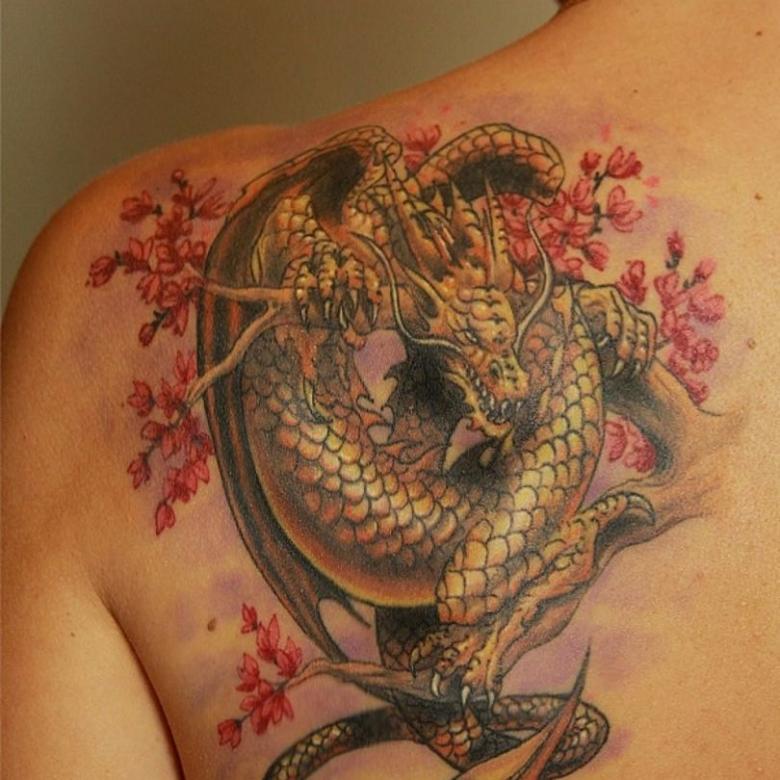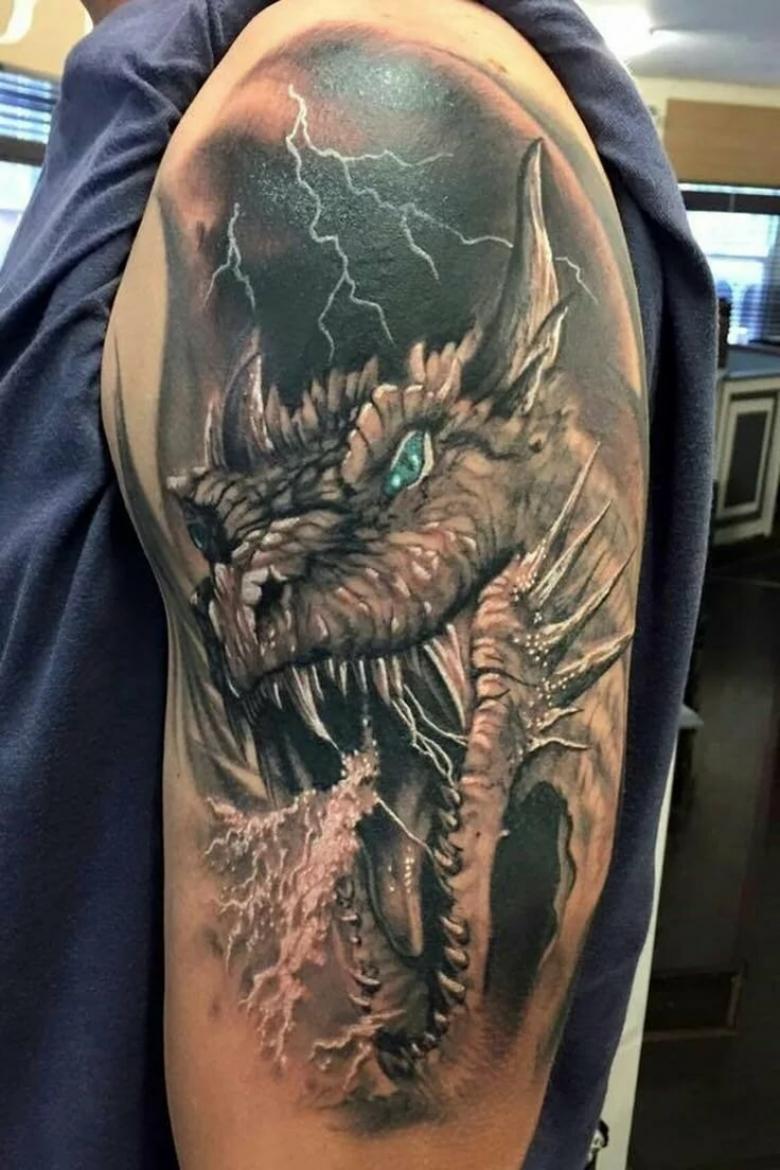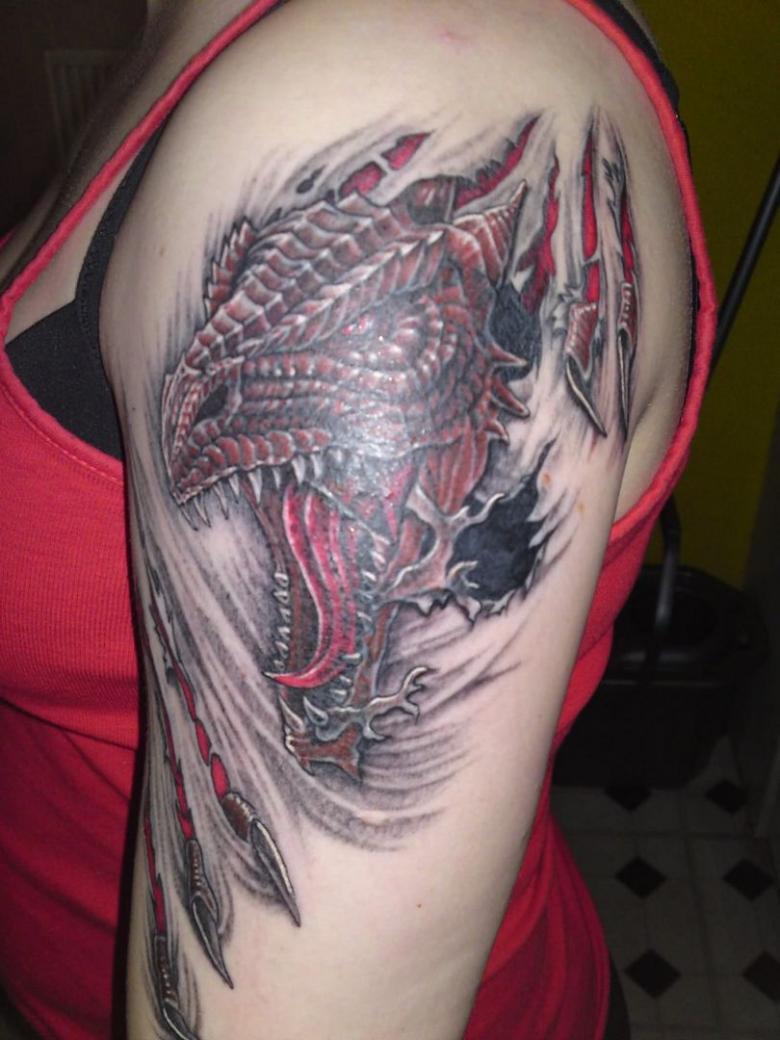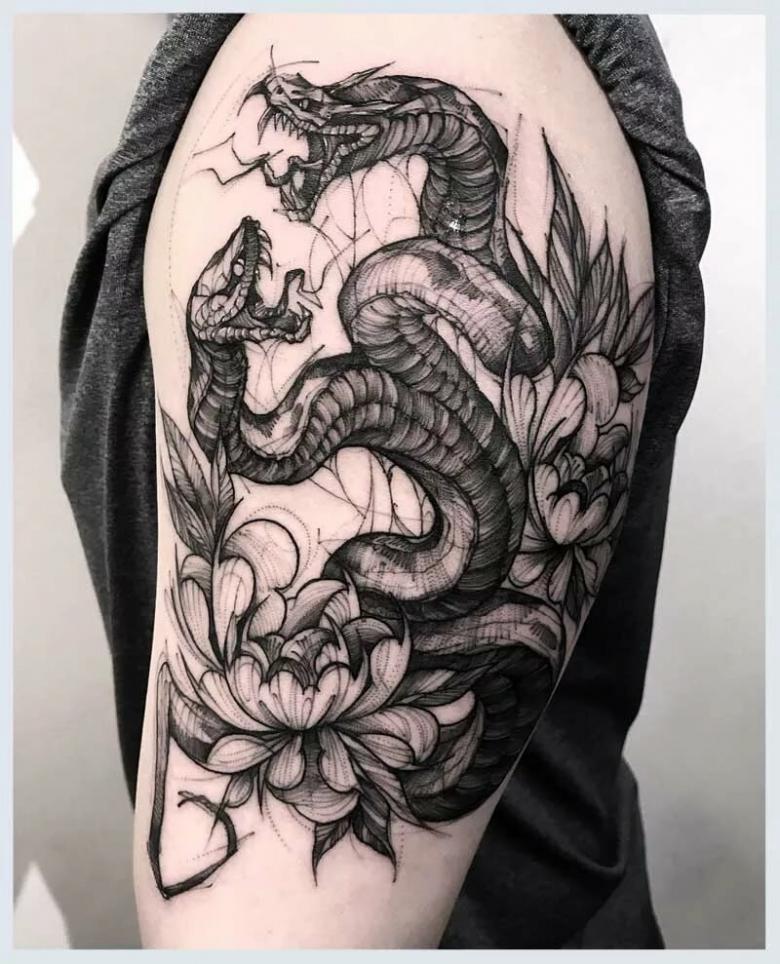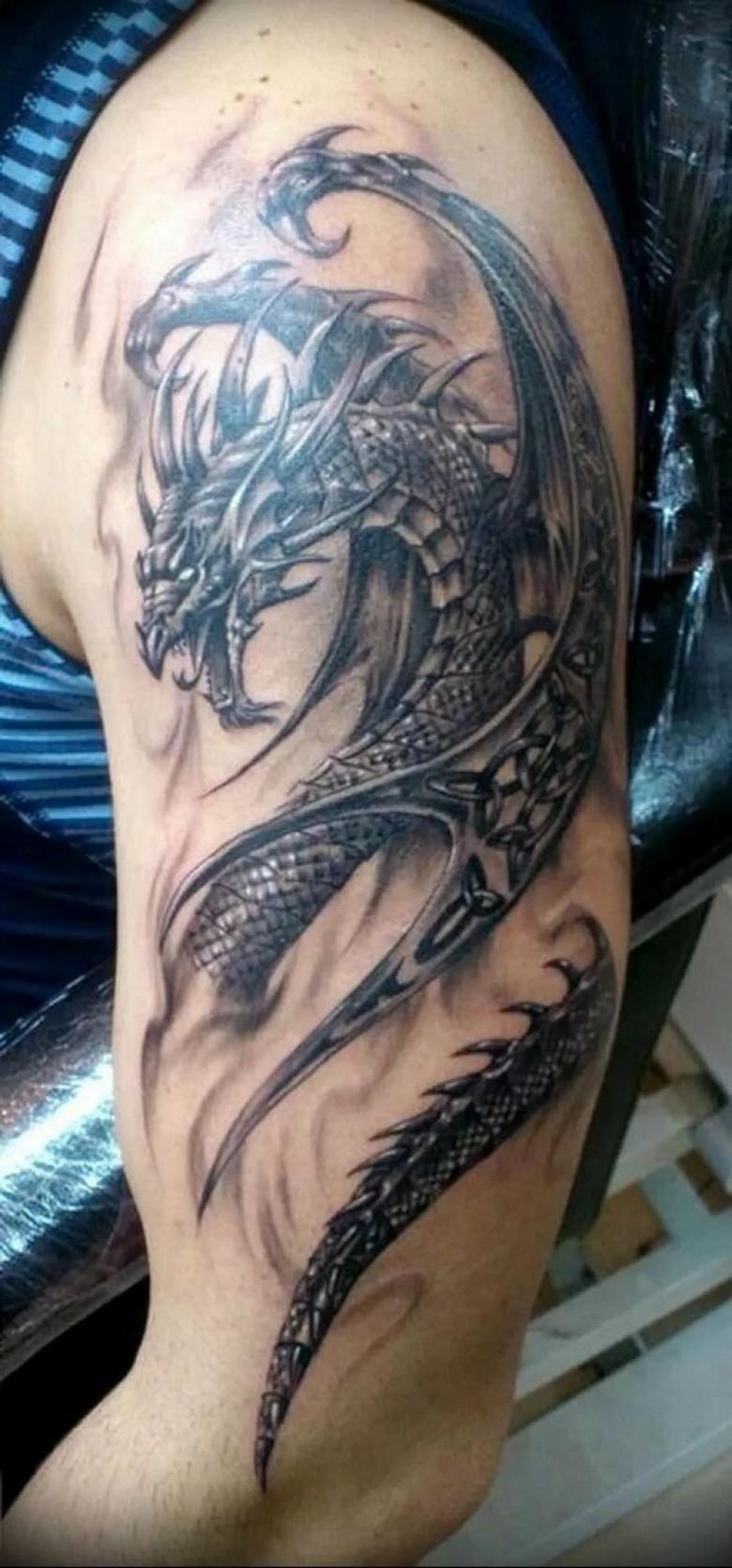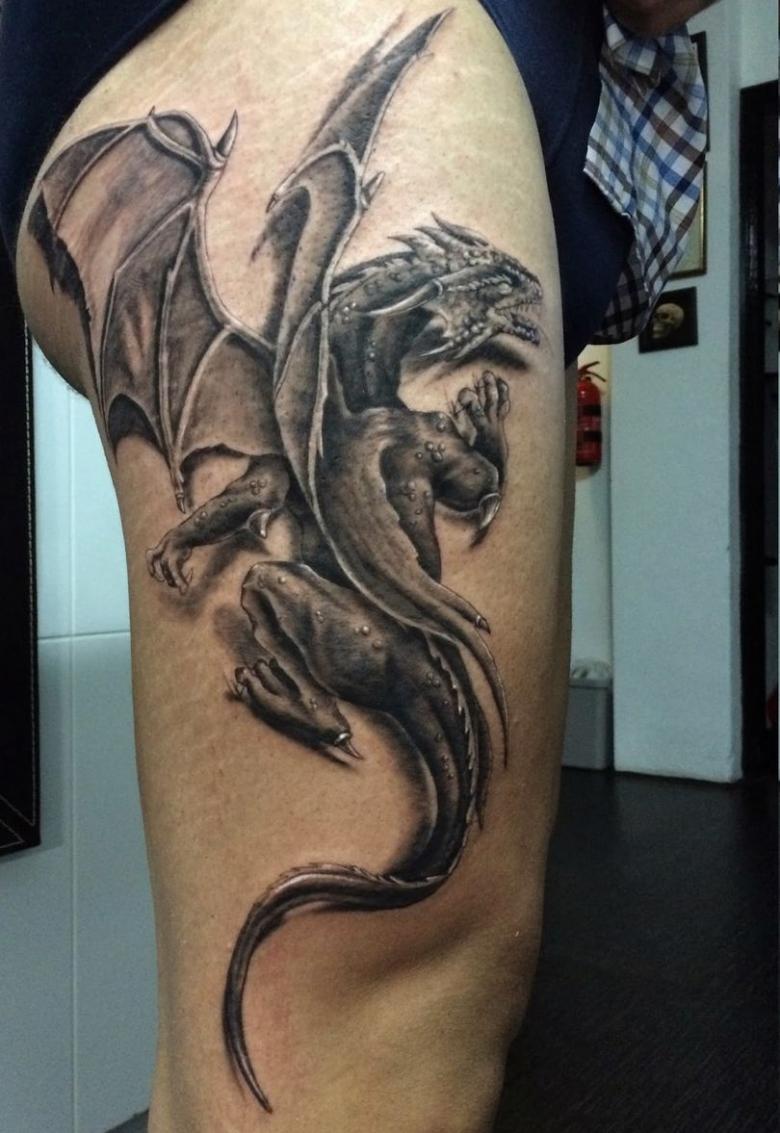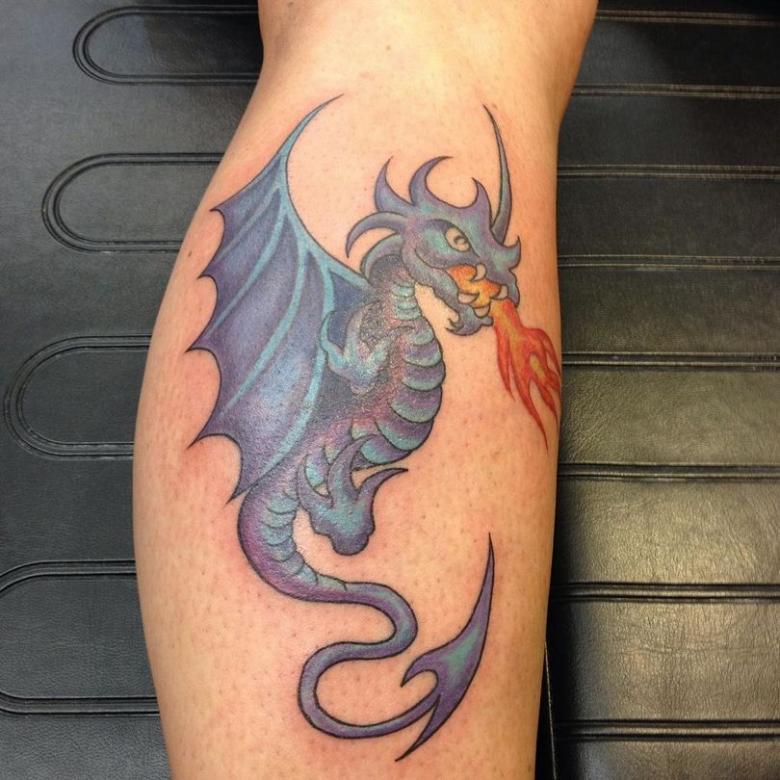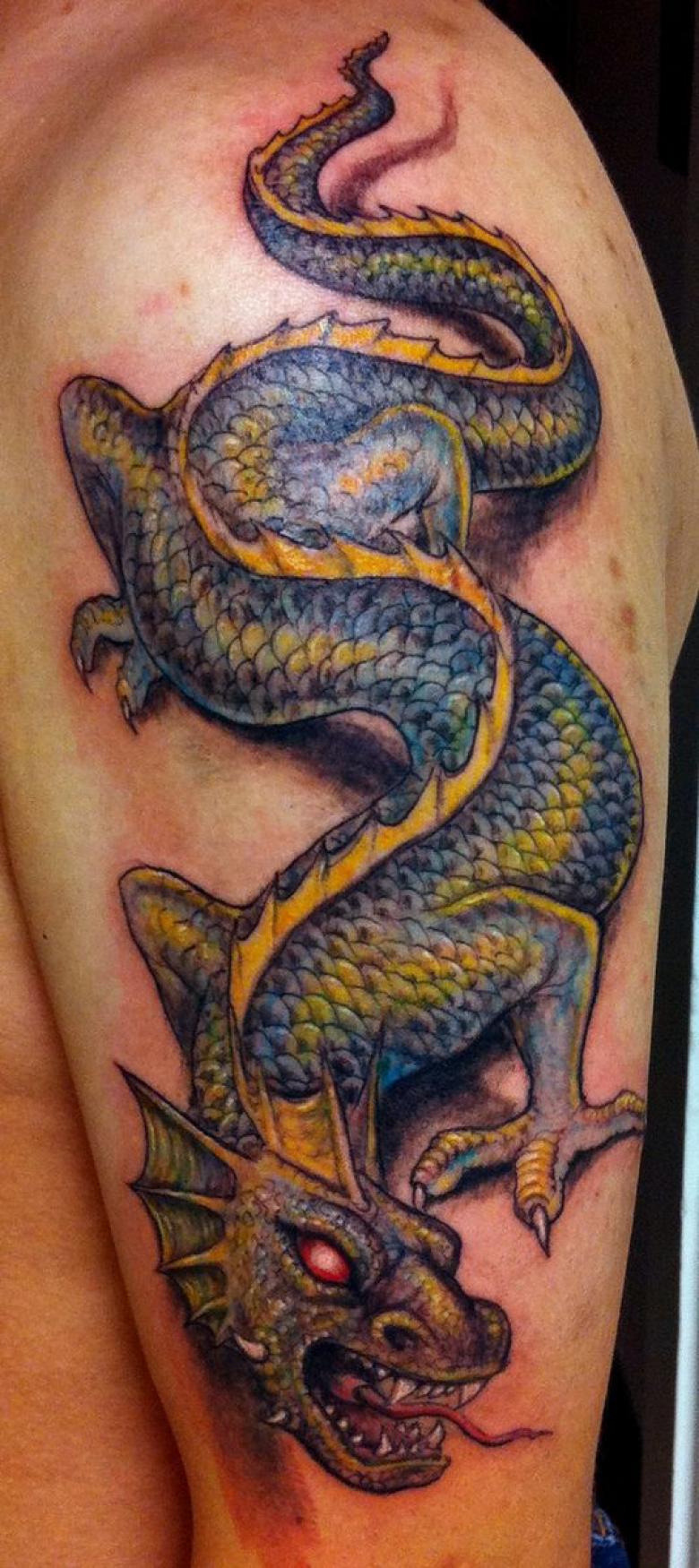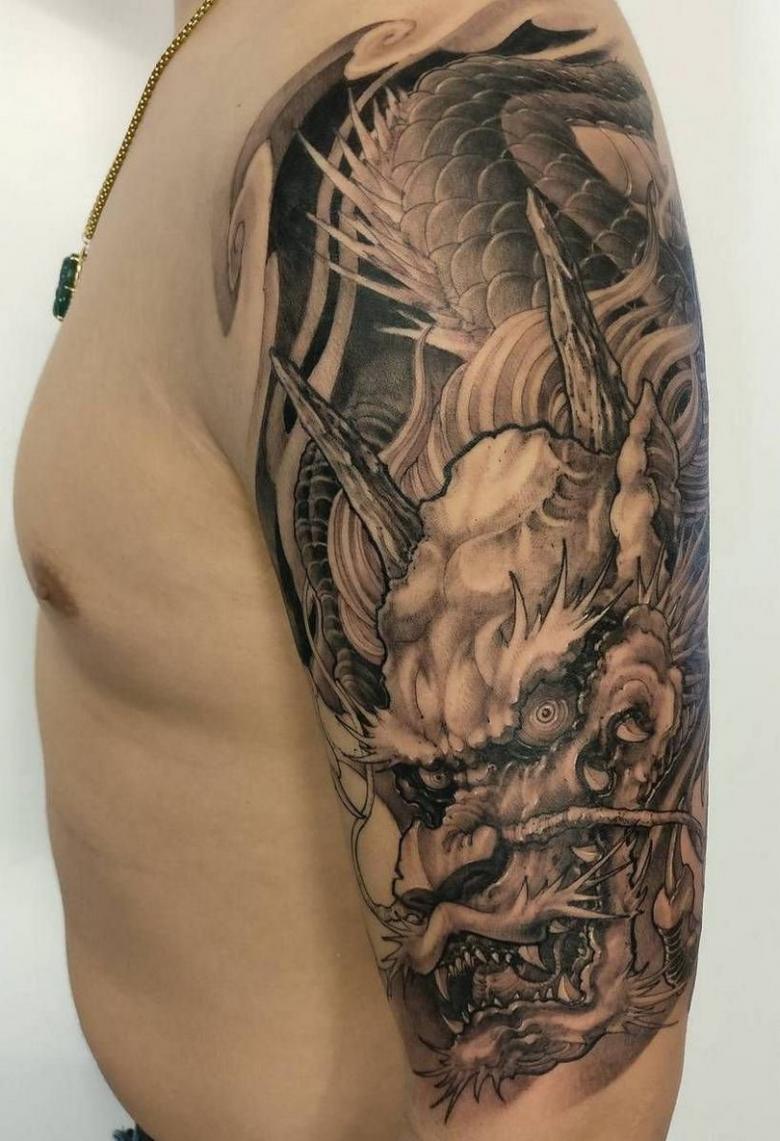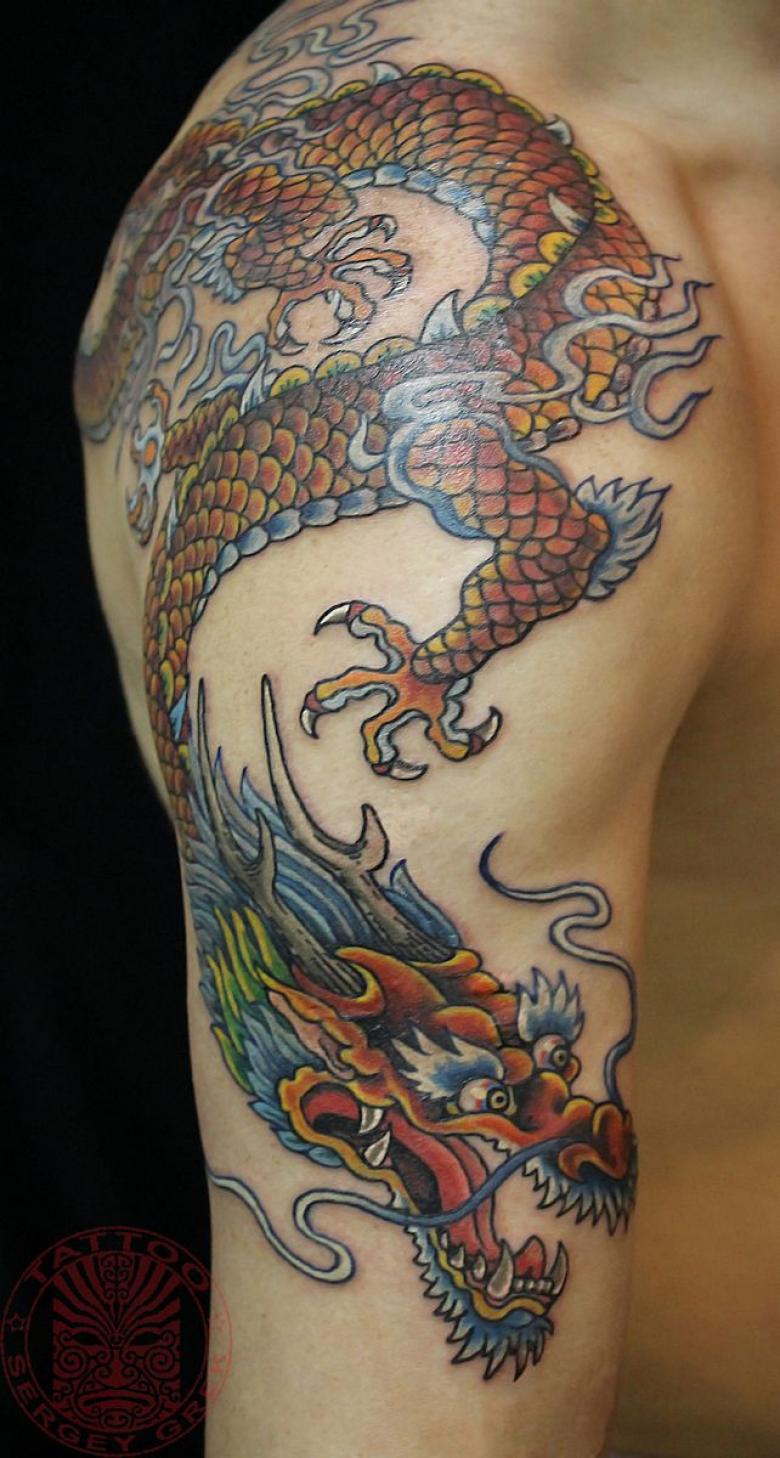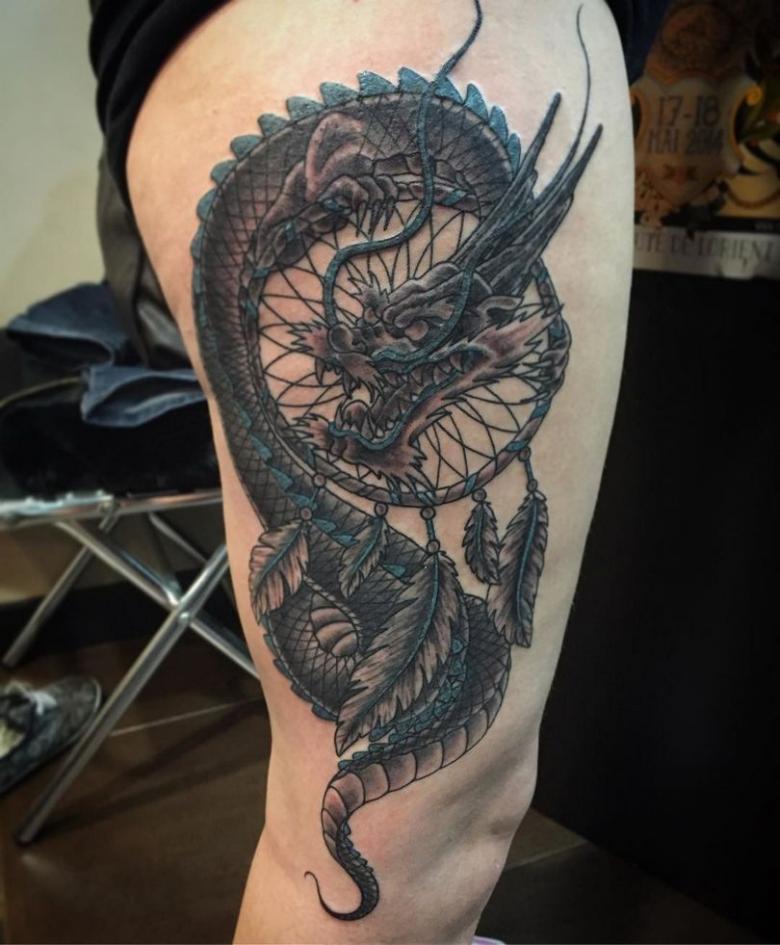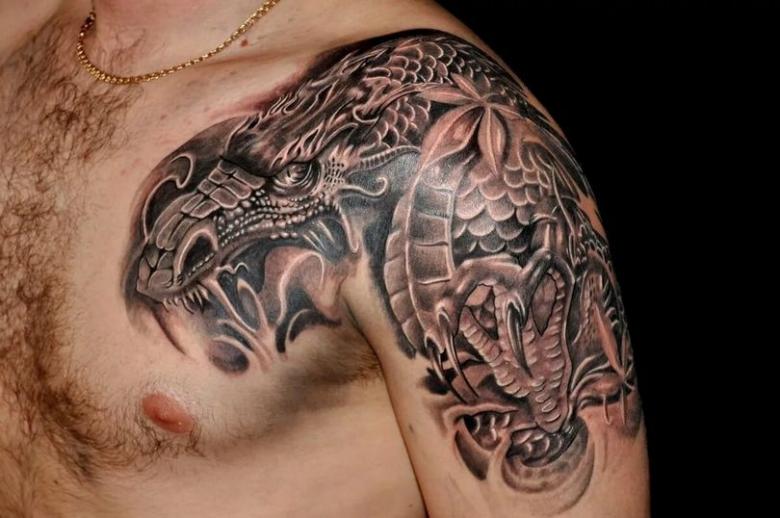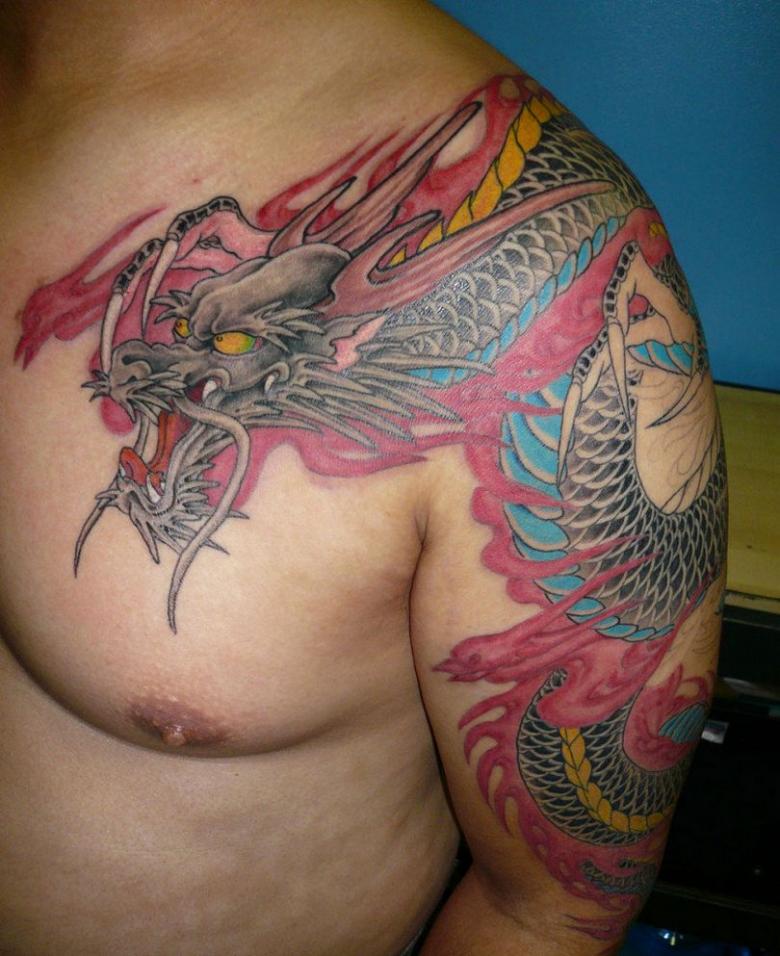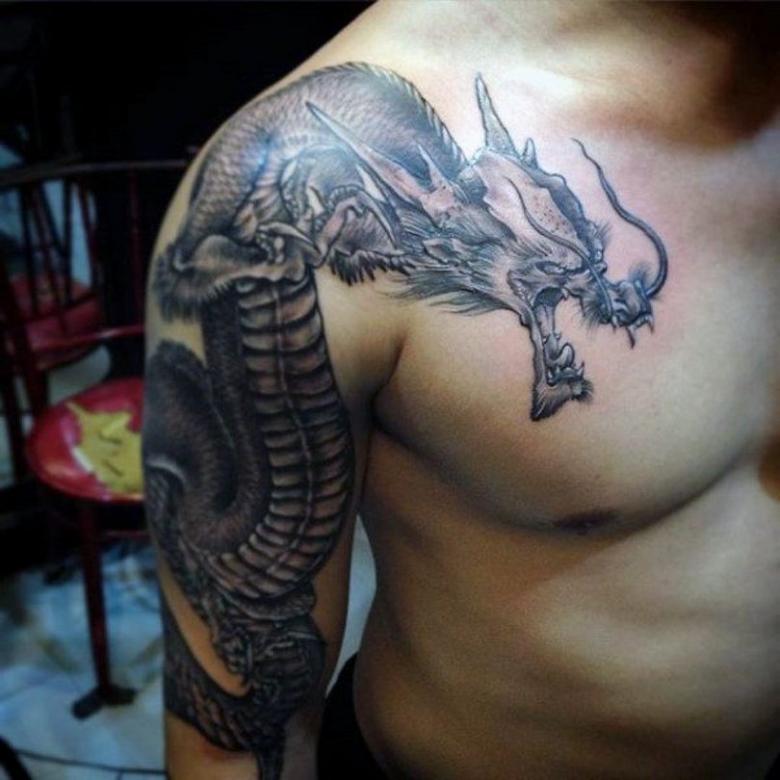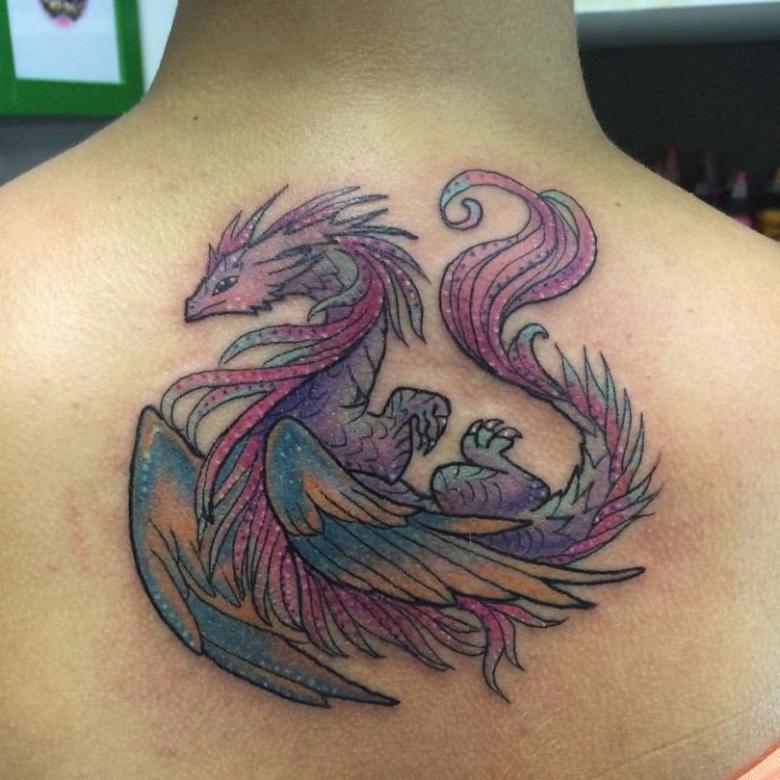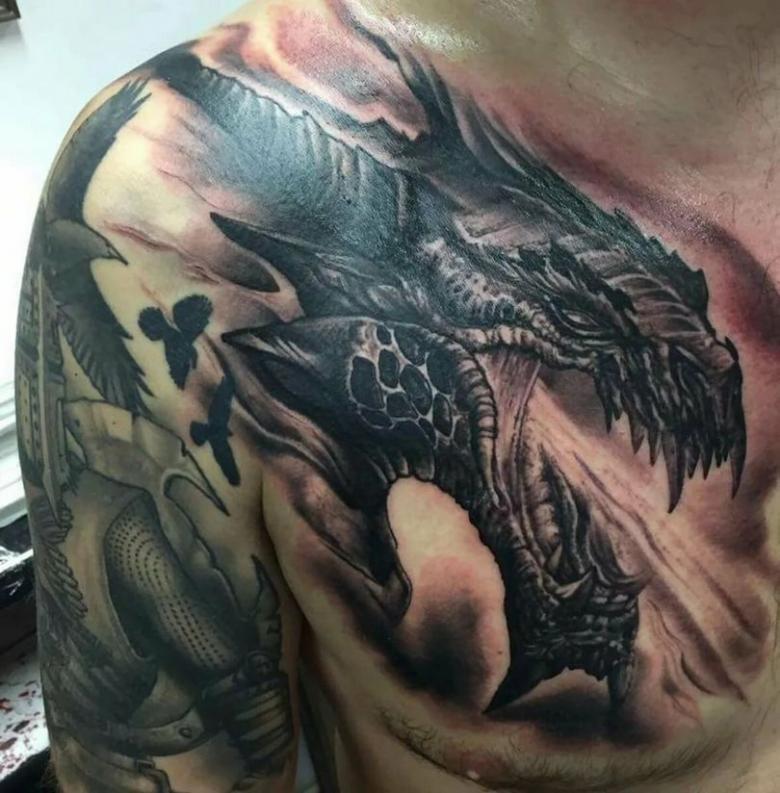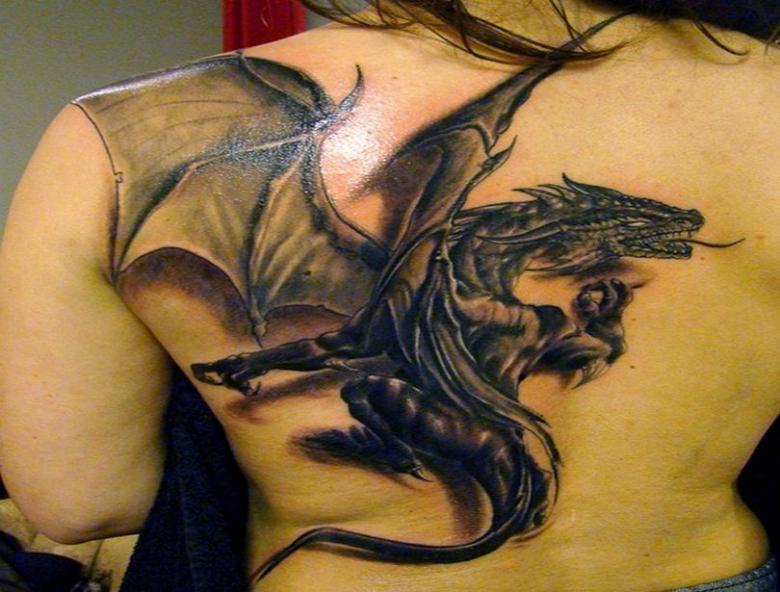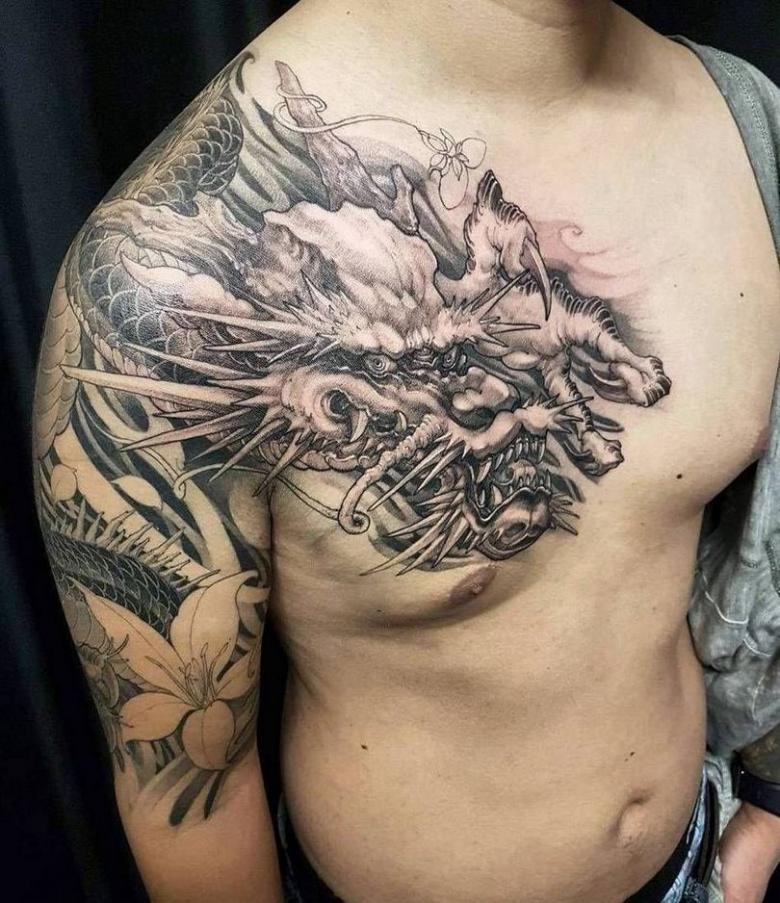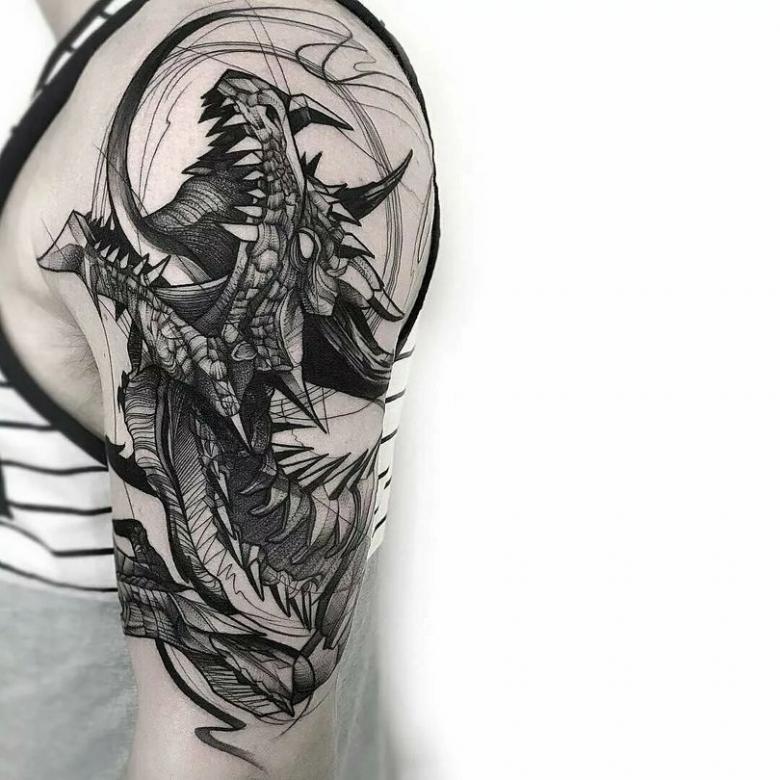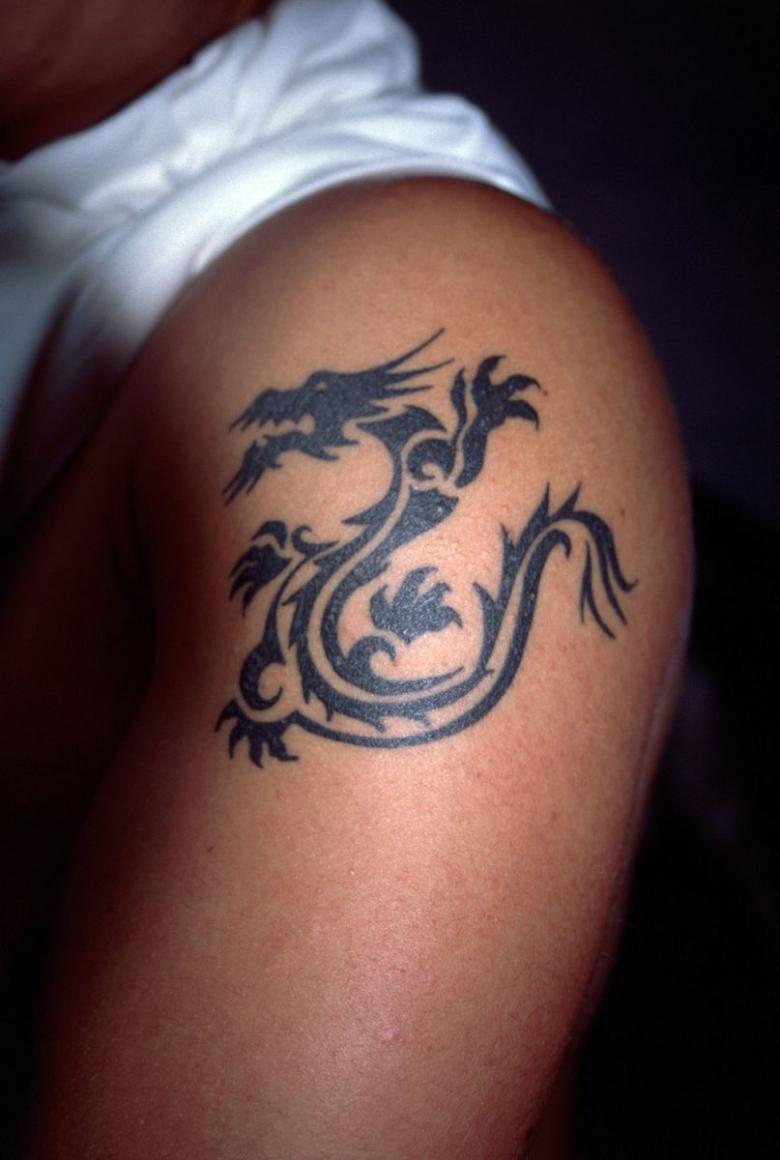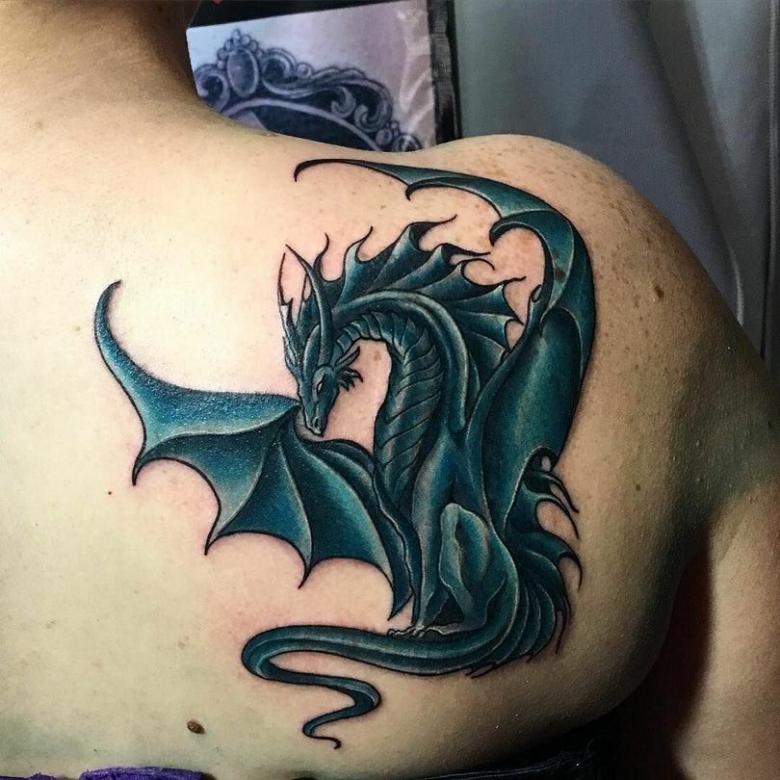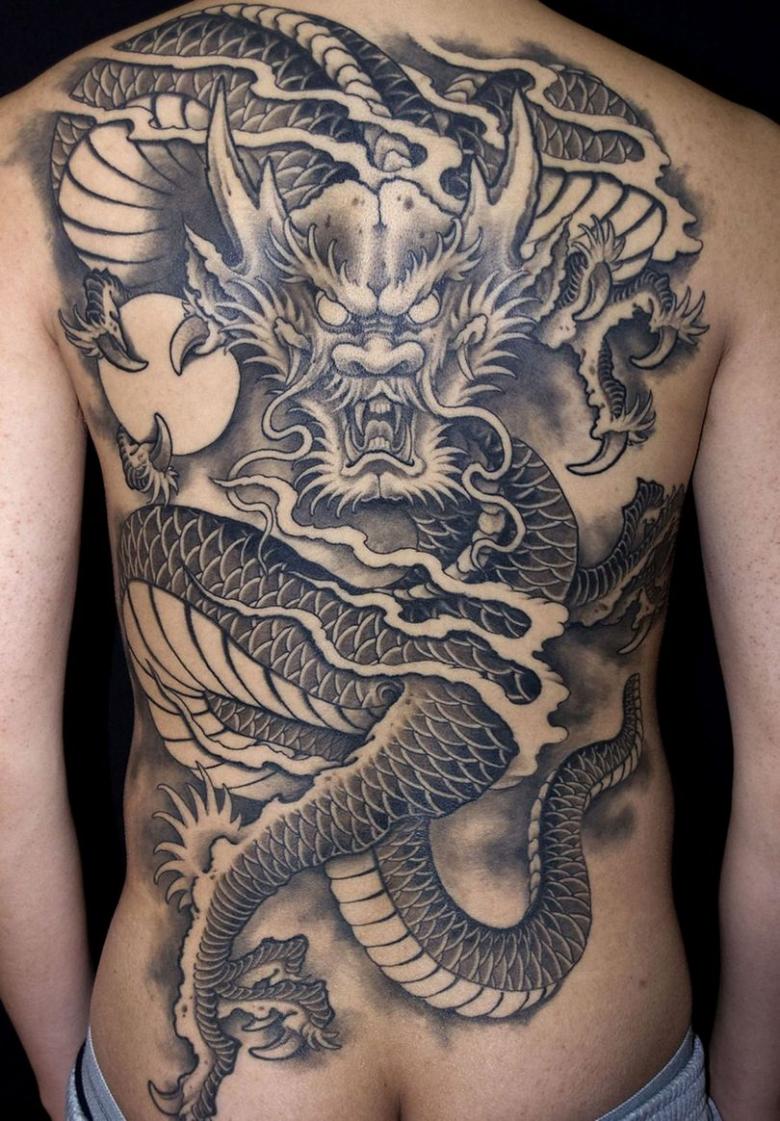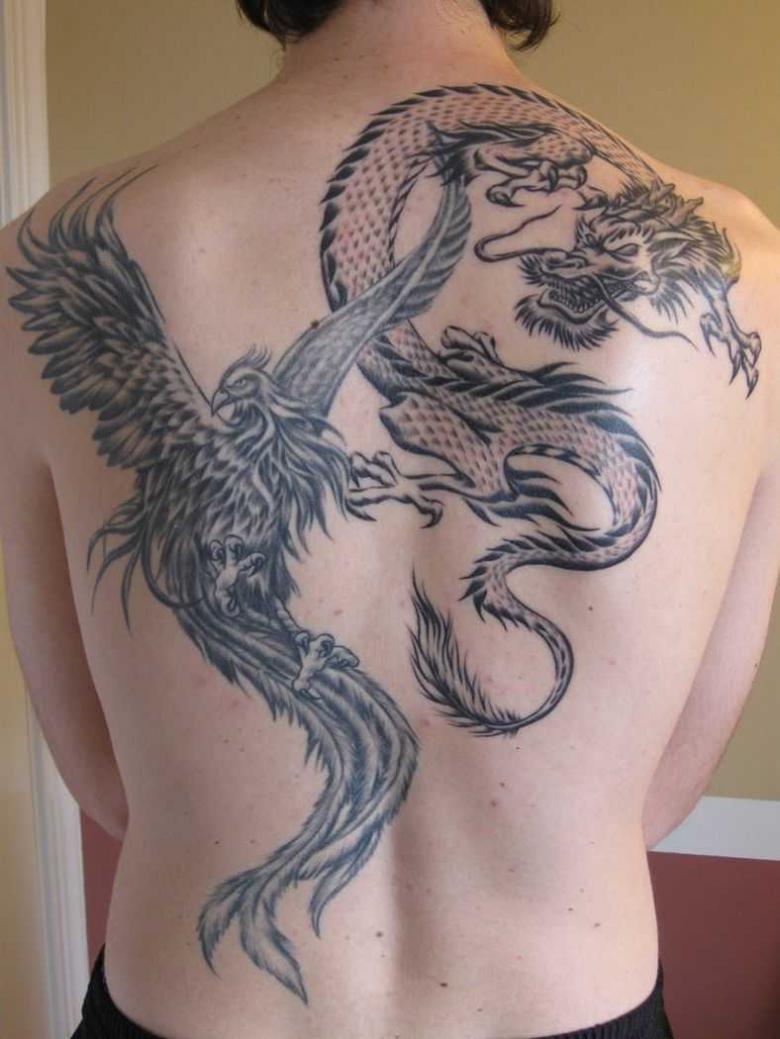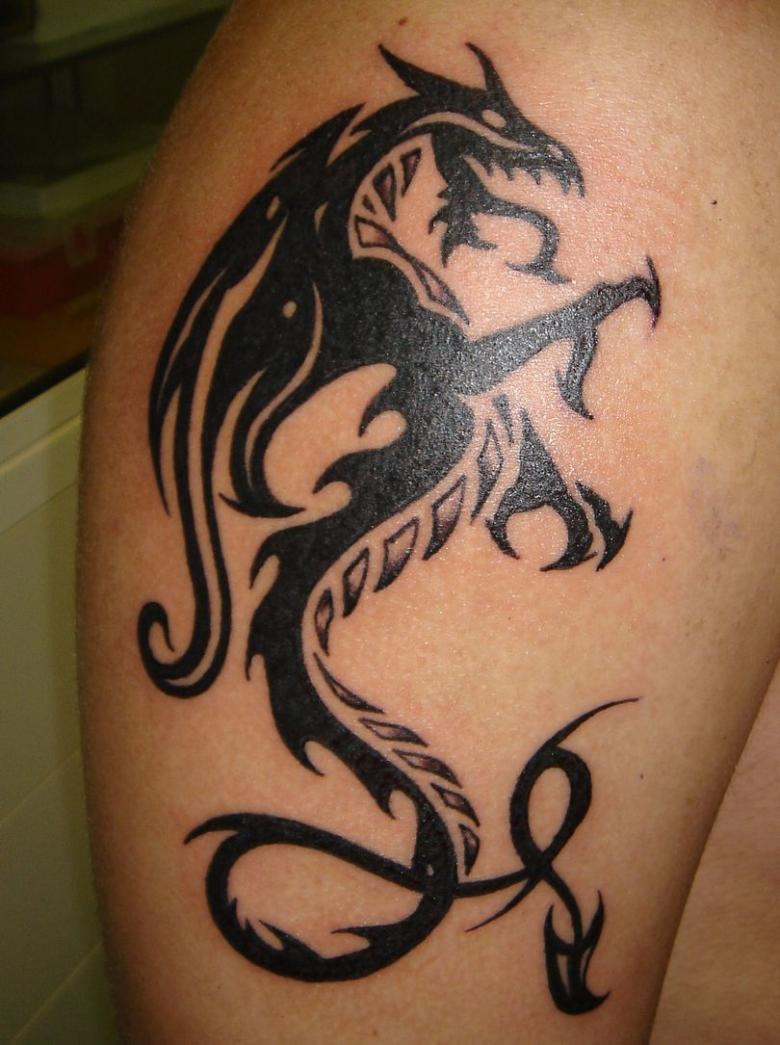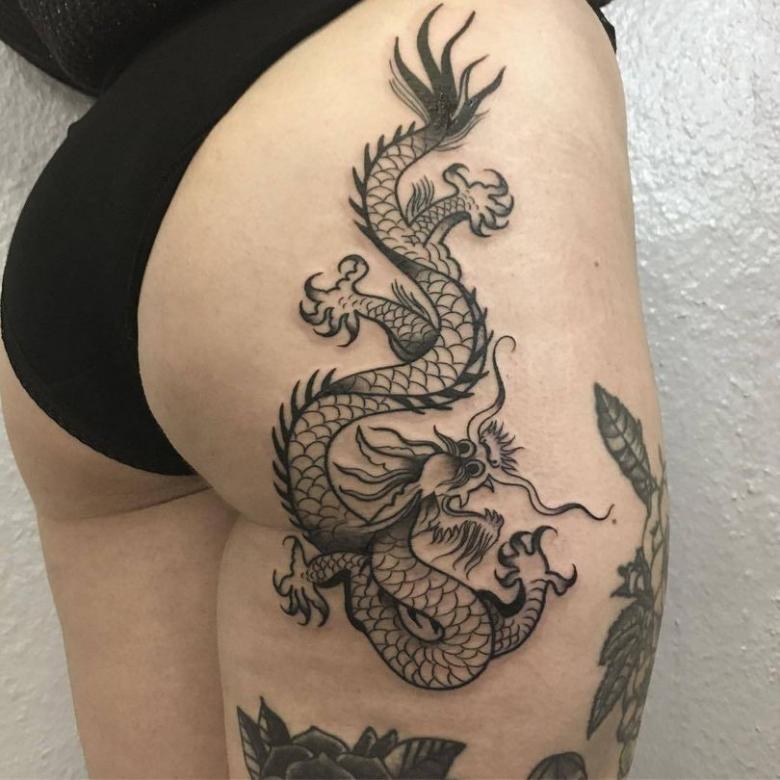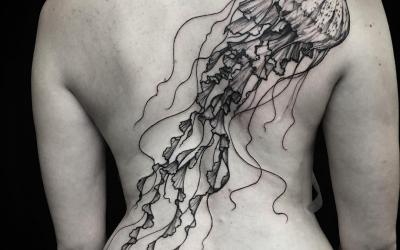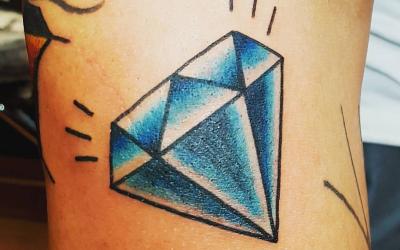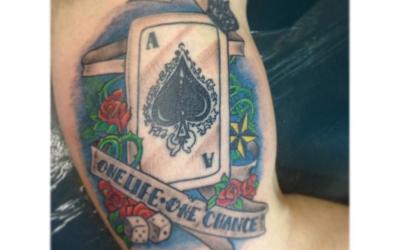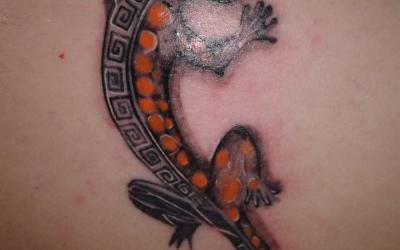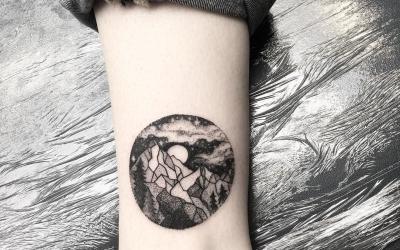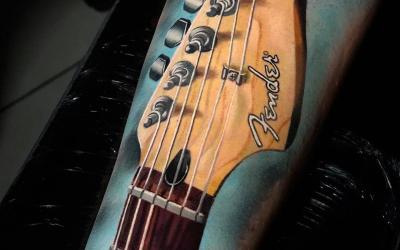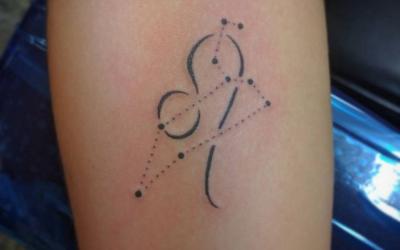Tattoo with a dragon - meaning for girls and men, places of application (on the arm, shoulder, back, hip, leg, neck), spectacular sketches and photo ideas
The image of the dragon, a mysterious creature from the myths, provides room for imagination and detailed drawing. The mythology and folklore of just about every country includes this clawed, fire-breathing character.
Dragon as a subject for tattoos
The powerful winged lizard at all times was popular as a motif for a tattoo. Often aggressive and threatening, the dragon on a warrior's body was intended to intimidate the enemy. In today's world, tattoos are done more for aesthetic reasons than the real need to convey a hostile message, but dragons are still respected.

After the release of the movie "The Girl with the Dragon Tattoo" a new surge of interest in the dragon tattoo does not subside to this day.Notably, there are actually two films: the Swedish version of 2009 with Noomi Rapace and the Hollywood film of 2011 with actress Rooney Mara in the title role.The dragons that adorn the backs of two girls are made in different techniques and are very different from each other.
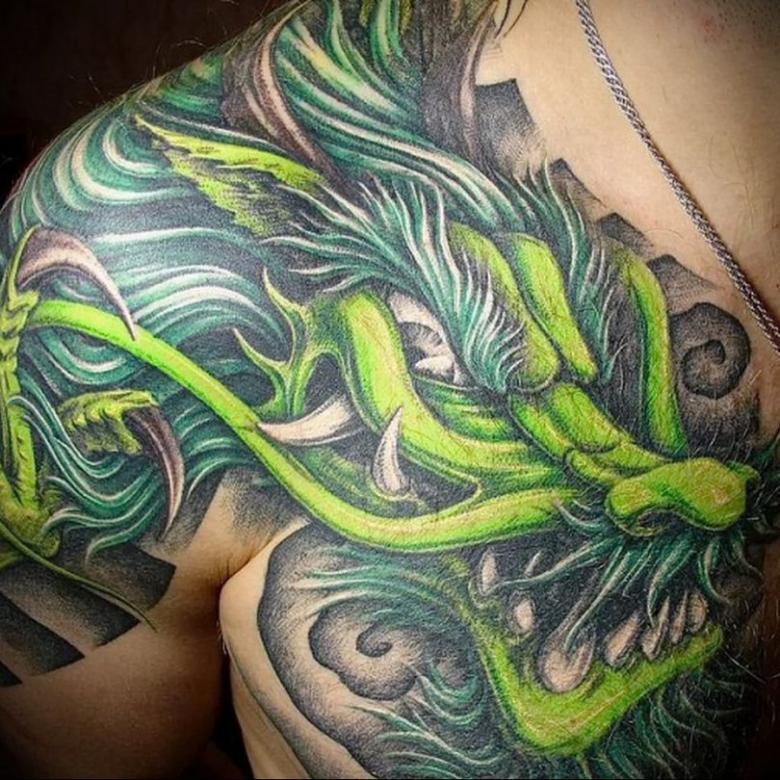
In the Swedish picture, the dragon tattoo is done in a realistic style. The monster shows an aggressive snout and eyes burning with hatred, "scratching" its mistress from the inside, leaving tears in the skin.
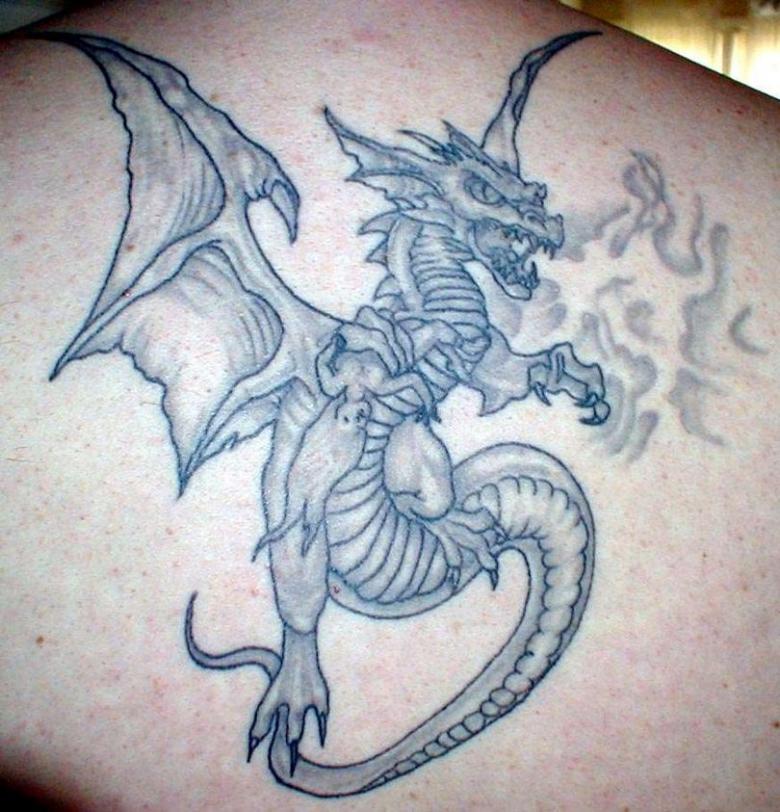
In Fincher's film, the tattoo is much more modest, making it look even more sinister. The black, flat, winged dragon "hides," positioned not in the center of his back, but partially sideways. The long tail curls in rings, ready to attack.
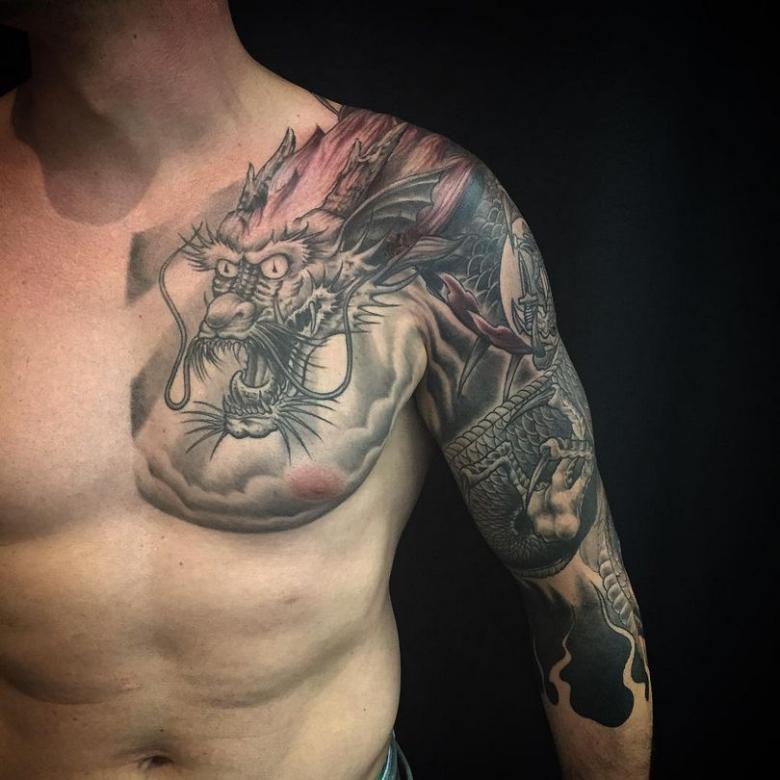
Speaking of dragons from the world of cinema, we can not forget the Mother of Dragons Daenerys and her flying pupils from the acclaimed TV series "Game of Thrones" (2011 - 2019). The Stormborn in the company of Drogon, Rhaegal, and Viserion is a popular tattoo motif among fans of the series around the world.

Intriguingly, the tattoo of the main character in Hollywood's Red Dragon is not at all a dragon, as one might expect. The entire back of the famous maniac is adorned with black articulations and twisted tribal-style horns, exposing the wearer's diabolical gut.
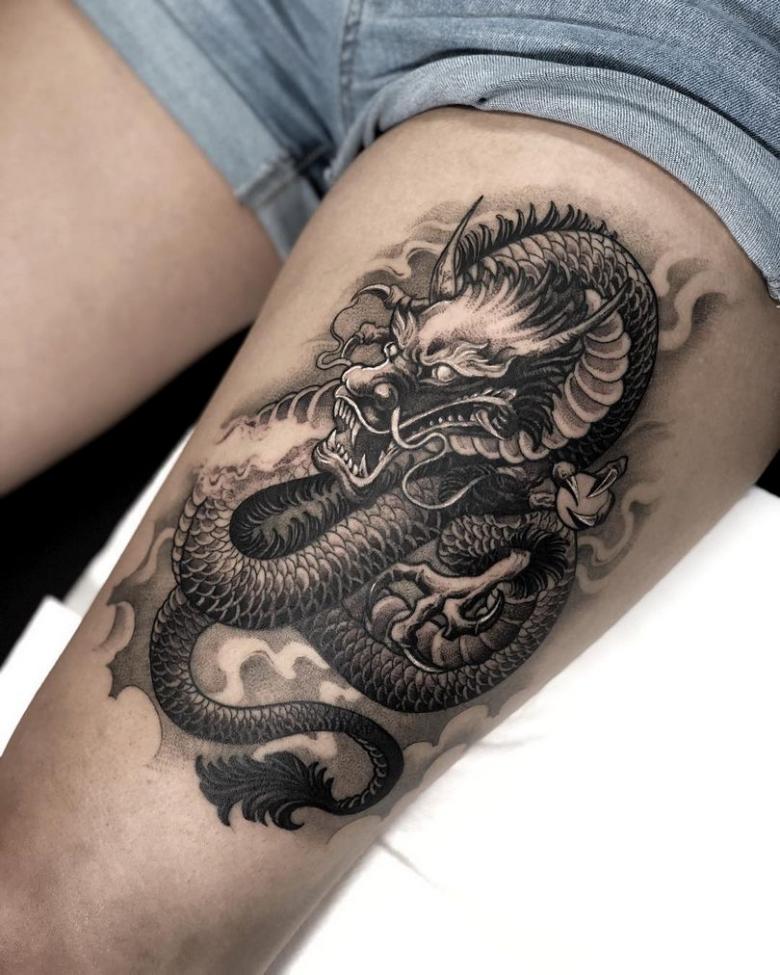
What kind of dragons are there?
The dragon is a mythical animal that has never existed in reality. Nevertheless, each of the nations that exist today has its own legends involving fairy-tale serpents. And, depending on the geography of origin, dragons have different characters and assumed appearance.

China
The mighty lizard in China symbolized fertility, carrying water to people in times of drought. In the first images of the water serpent soared from lakes and rivers, ruled the element of water. In later versions, his powers encompassed all elements: he lived in the water, soared in the sky, breathed fire and could turn into a grain of sand at will. The Chinese dragon represents wisdom, harmony, health and longevity.
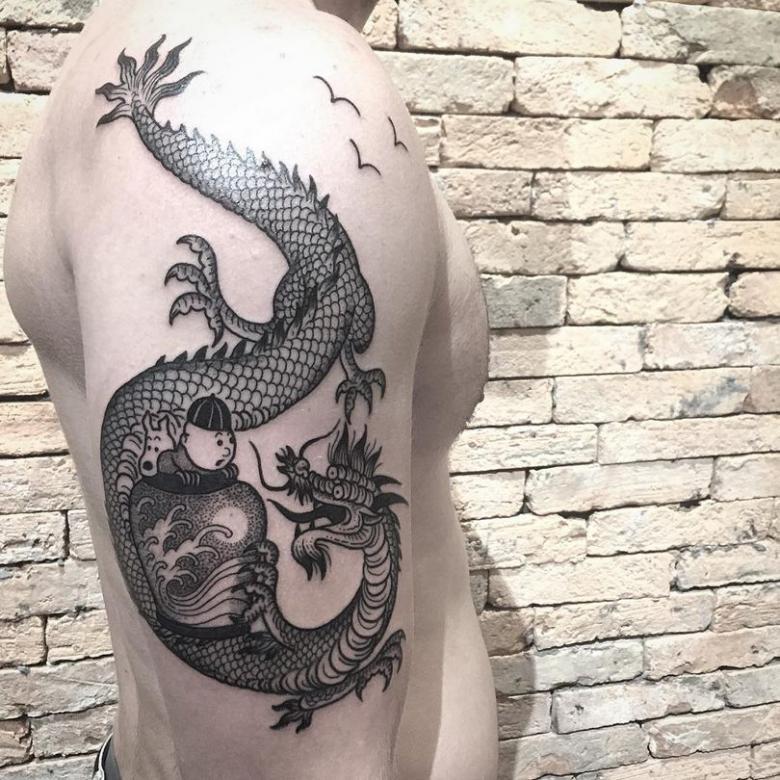
He is like a scaly snake and has no wings, but can fly. According to the image canon, he has 117 scales and 5 claws on each paw. The classic attribute of the Chinese dragon is a burning pearl in its mouth.
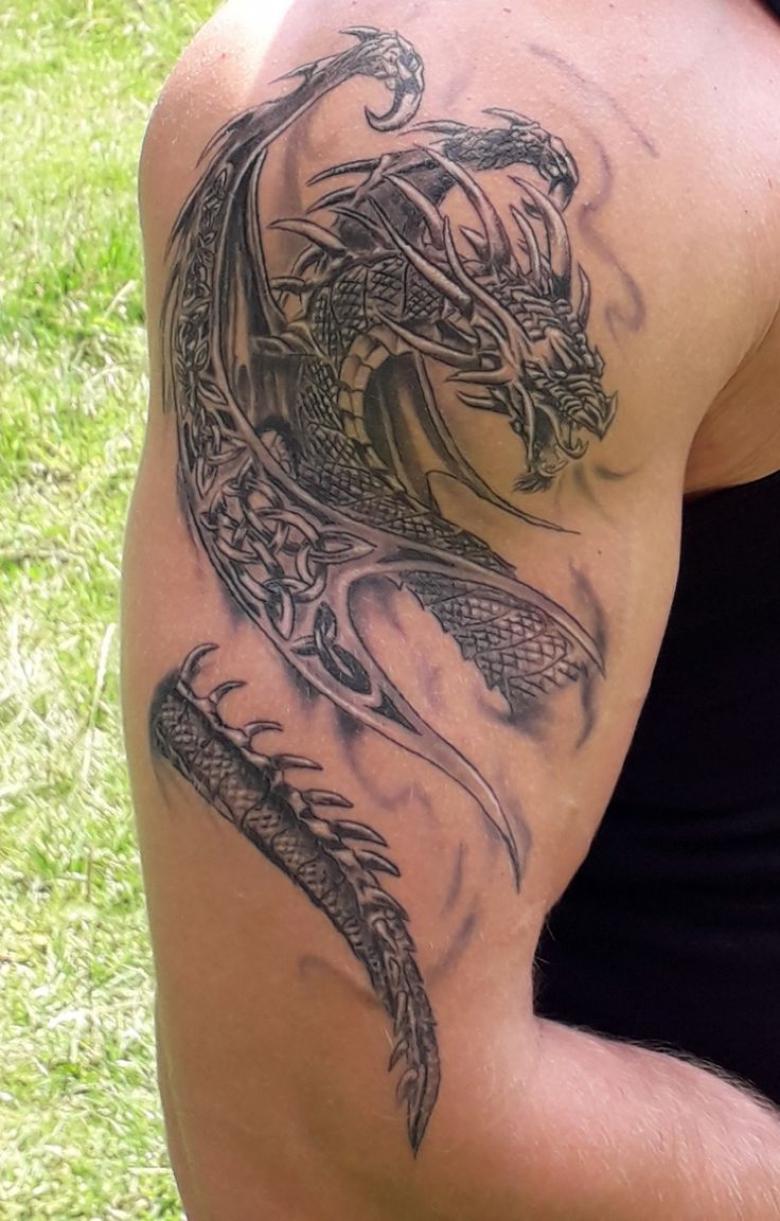
Japan
Japan went even further in the exaltation of the mythical creature. Legend has it that the first emperor descended from dragons.
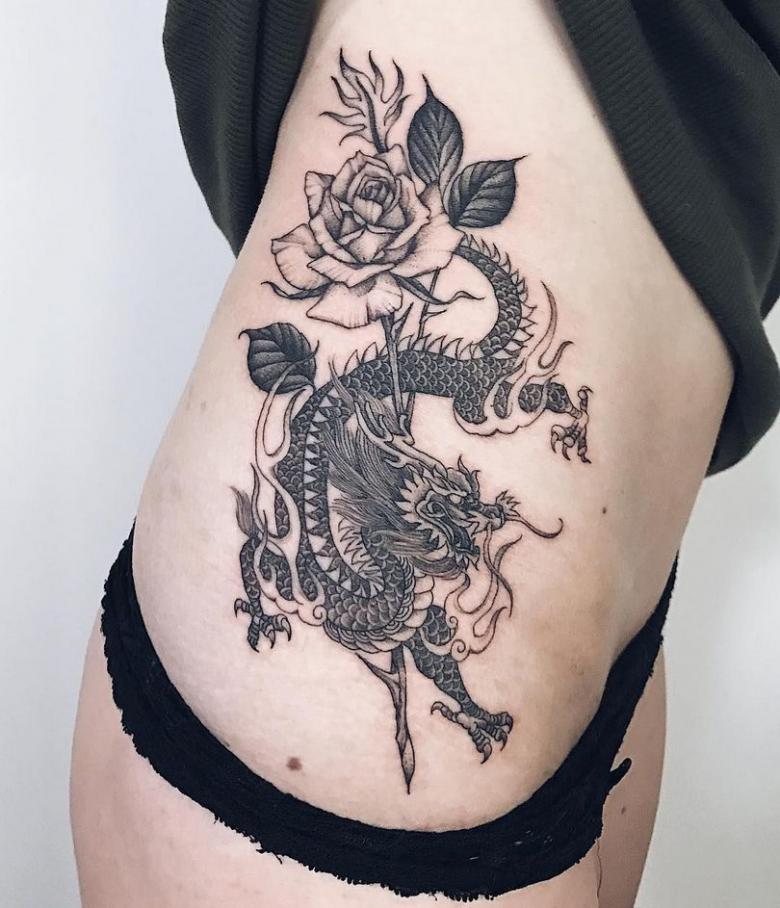
In Japan, dragons are also subordinate to the water element. Their power is infinite, their wisdom infinite. The dragon is a helper and protector of Buddha, a symbol of the circle of life, a guardian against dark otherworldly forces. The image of dragons is present on all Buddhist temples.
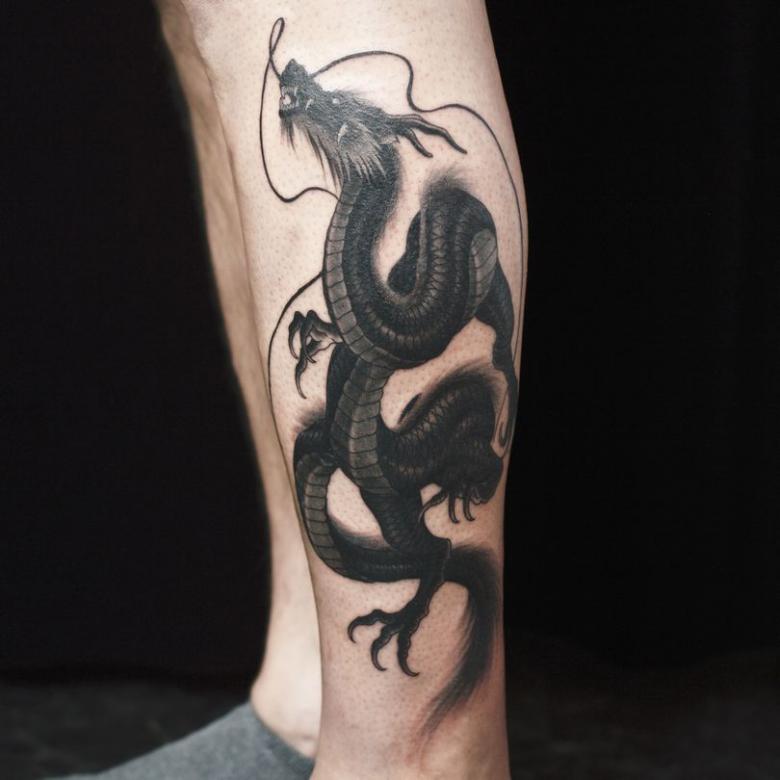
The Japanese dragon has many faces: it can take the form of a wolf, horse or camel with the body of a snake. The canons dictate the depiction of a beast with a beard and 3 claws on its paws.
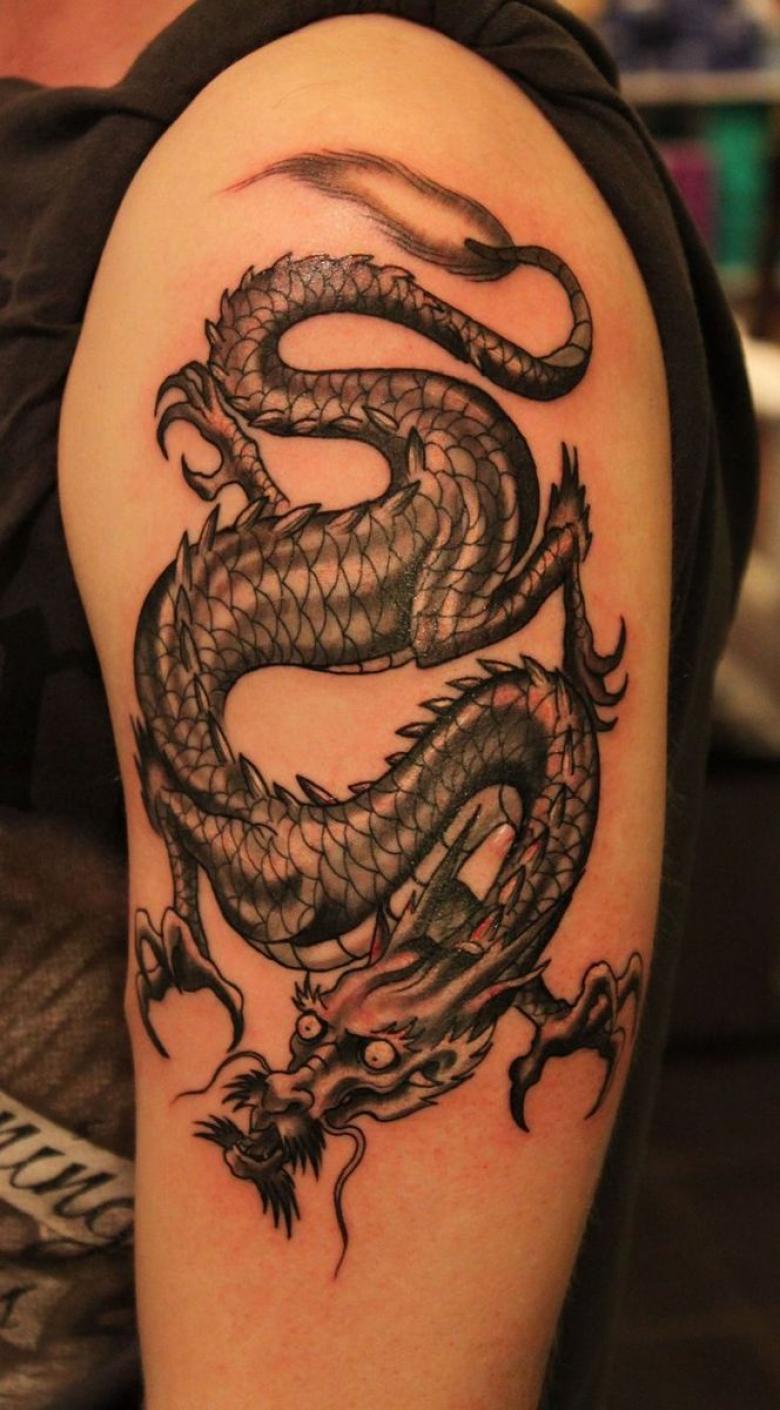
Europe
The European dragon has a very different character. He is not a sage, but a villain and terrorist. He oppresses the townspeople, holds the people in fear, and demands princesses and babies as sacrifices.

At the same time, he dwells in dungeons and caves, guarding countless treasures. In European mythology the dragon is an obstacle in the way of the brave knight; defeating the lizard is the main dream of the hero.
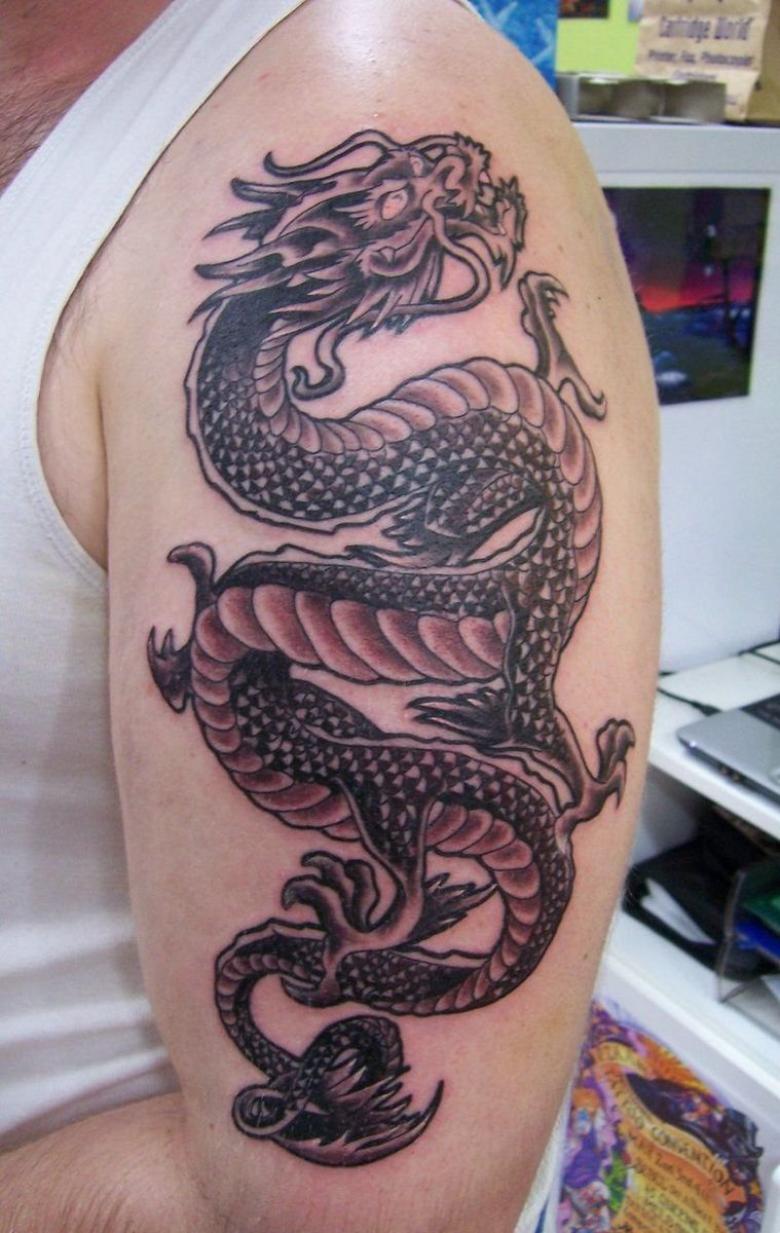
In depictions of European dragons have long necks, sharp tails and webbed wings like bats. It breathes fire, exposing its predatory forked tongue.
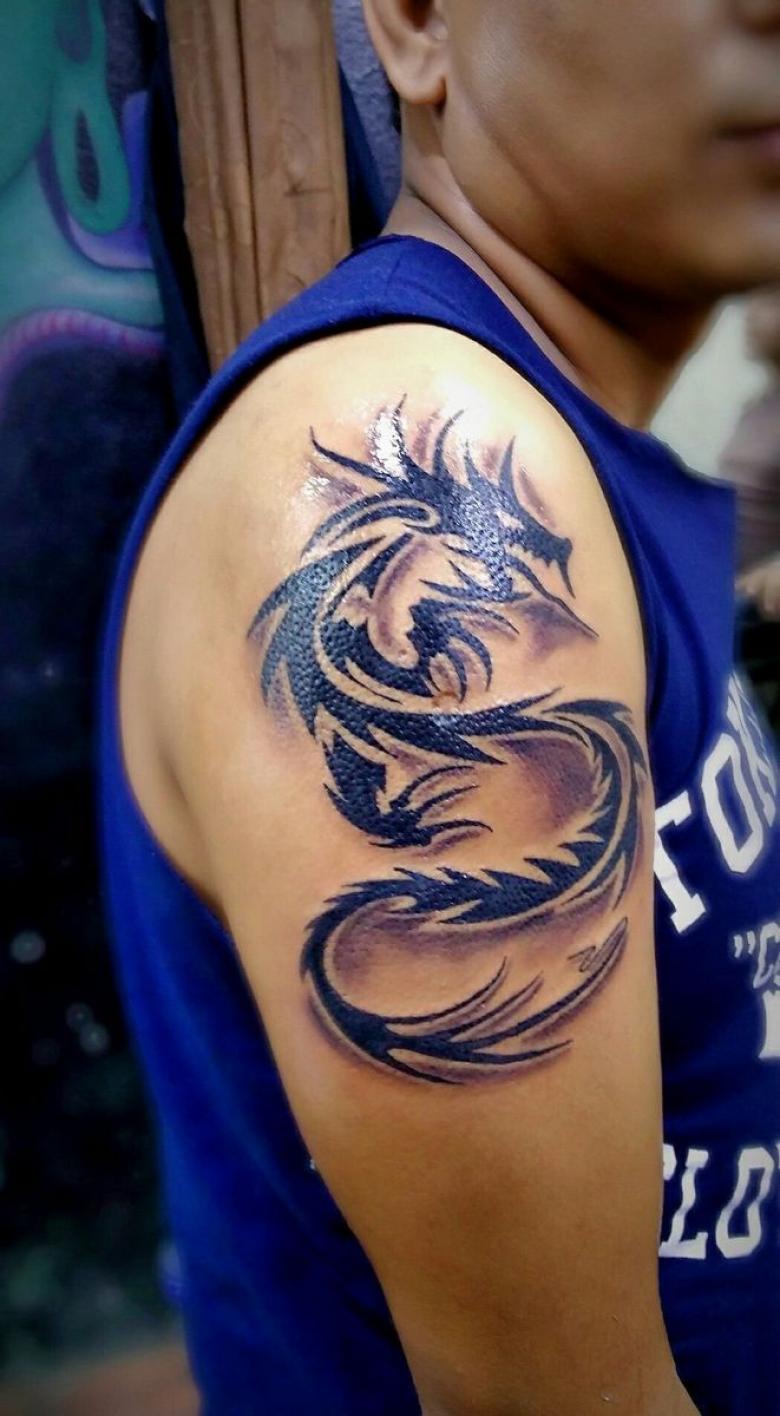
Russia
Judged in relation to dragons, the Russian people are more European than Asian. Since the times of Kievan Rus, the three-headed Serpent Gorynych has become a classic negative character that is defeated by all bogatyrs and daredevils. The serpent is aggressive and powerful, but stupid and clumsy, even three heads and the ability to regenerate do not save him from death under the sword of a hero.

The coat of arms of Moscow, where St. George the Victorious pierces the serpent with his spear, is another confirmation of the vile and humiliating role of Russian dragons in mythology.
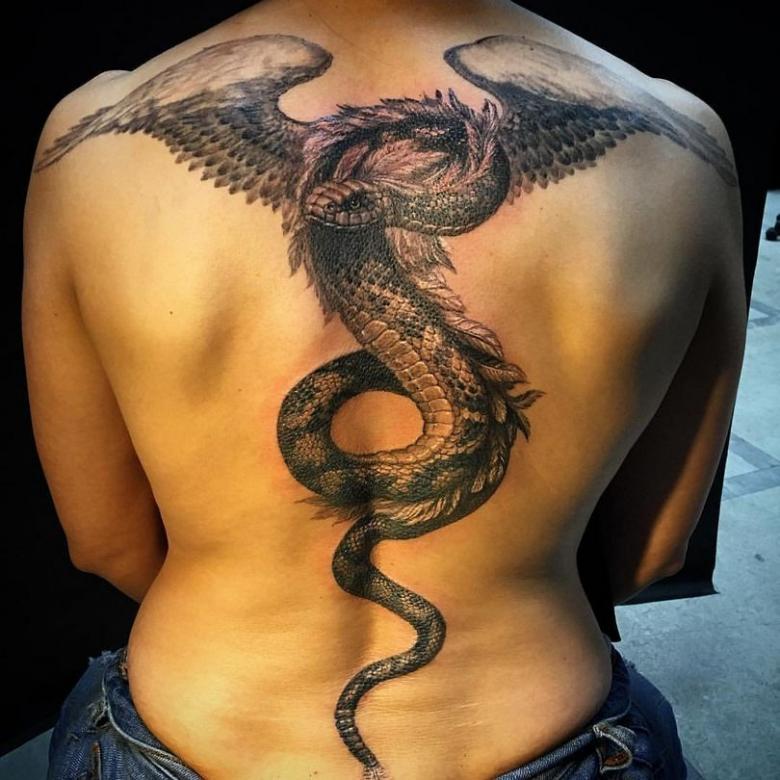
Styles of tattoos
Depending on the desire of the future owner of the tattoo, the dragon tattoo can be performed in any style. Traditionally, the techniques of realism and oriental are considered winning for the image of dragons.
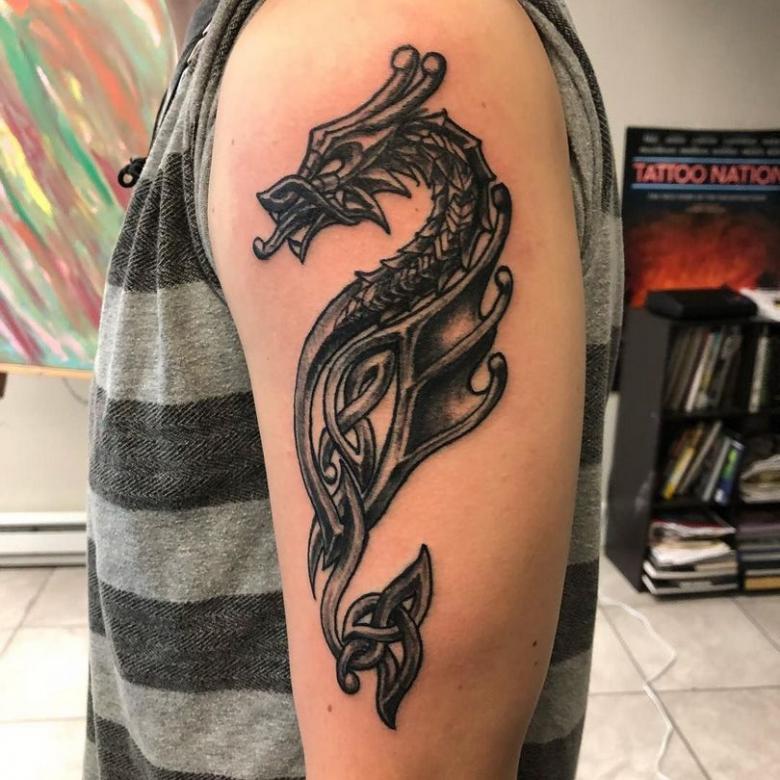
Realism .
Here everything is clear. The image of the dragon, depending on the chosen source, corresponds to the canons and is made as plausibly as possible. Scales, membranes, claws, flames and puffs of smoke from the opened mouth - the more terrible, the higher the skill of the tattooist.
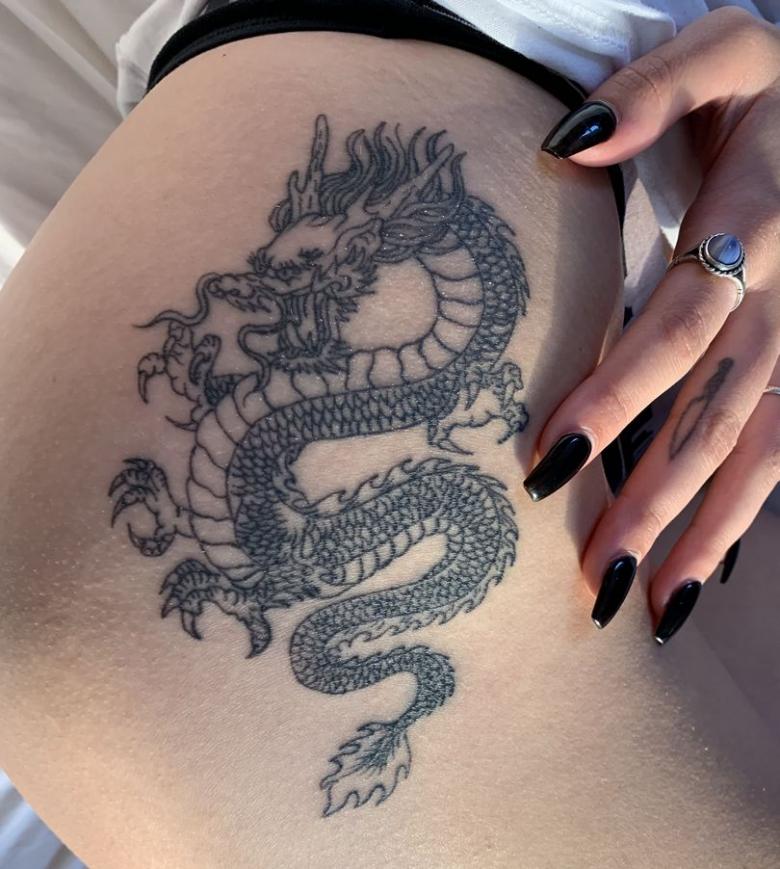
The Oriental
Usually implied are tattoos stylized as the Japanese Yakuza mafia's body painting.
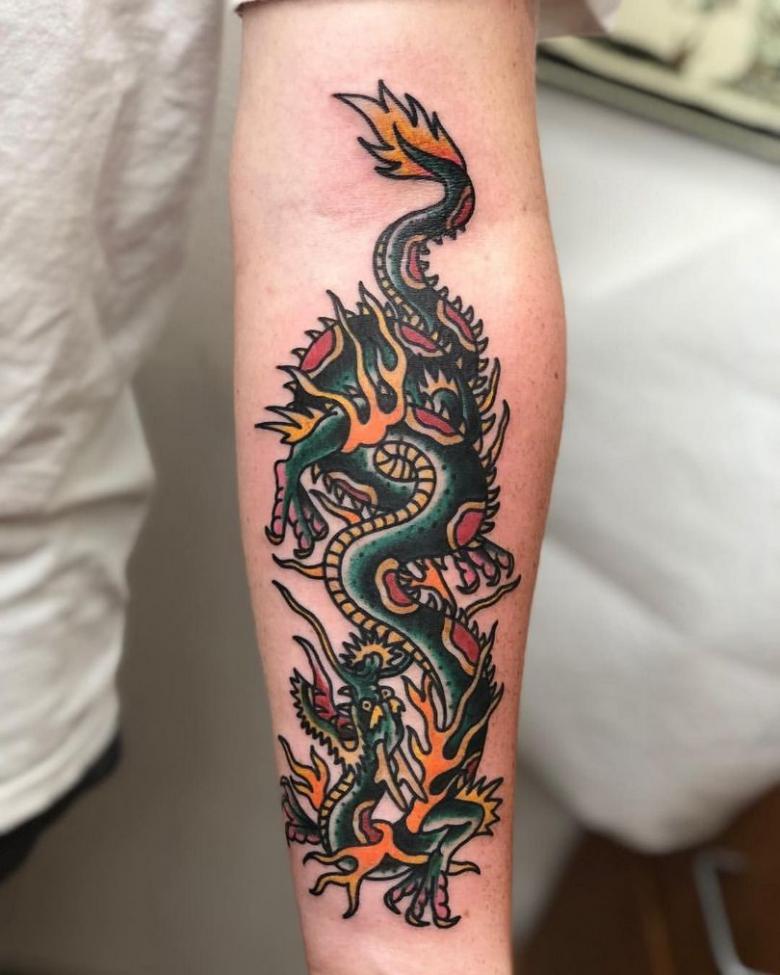
"Ryu" - means "dragon" in Japanese. In the criminal world, only the bosses have the right to wear such tattoos, demonstrating unconditional power. Yakuza tattoos cover the maximum area of the body and are applied in an ancient technique with a bamboo stick tebori. The meaning of this painting unequivocally makes it clear that a person renounces the world of ordinary people and goes to the dark side, rejecting the right to visit public places.
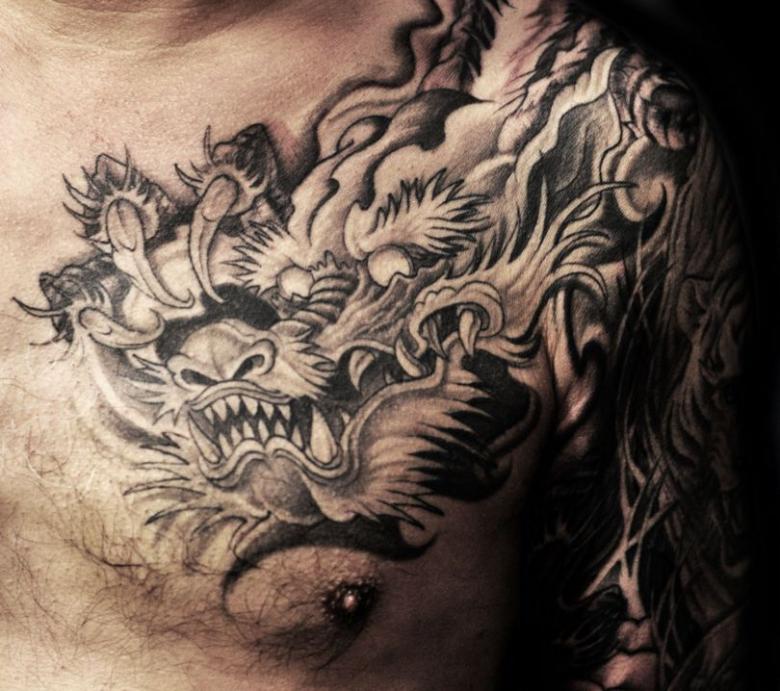
Oriental style tattoos can be worn without fear or doubt by a completely ordinary person. Stylized tattoos are made with a deliberate artistic violation of the canons, so no one will take you for Yakuza. Tattoo-masters take only the decorative component and masterfully play with it.
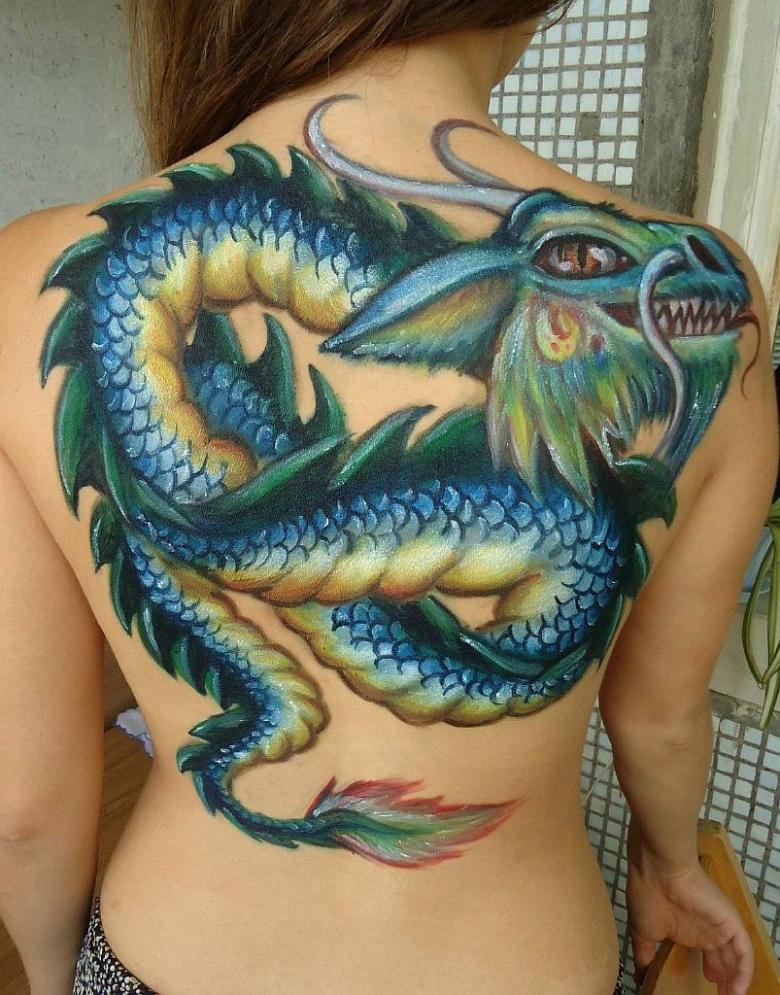
Other styles
There is no strict rule that some styles are good for the dragon tattoo and some are inappropriate. A good implementation of a bold idea is the key to success. Among young people, for example, there are often cartoon tattoos. As a basis are taken characters from the cartoon "How to tame the dragon" or computer games.

Tattoos for men and women
As in the case with style, there is no clear division of male and female tattoos.
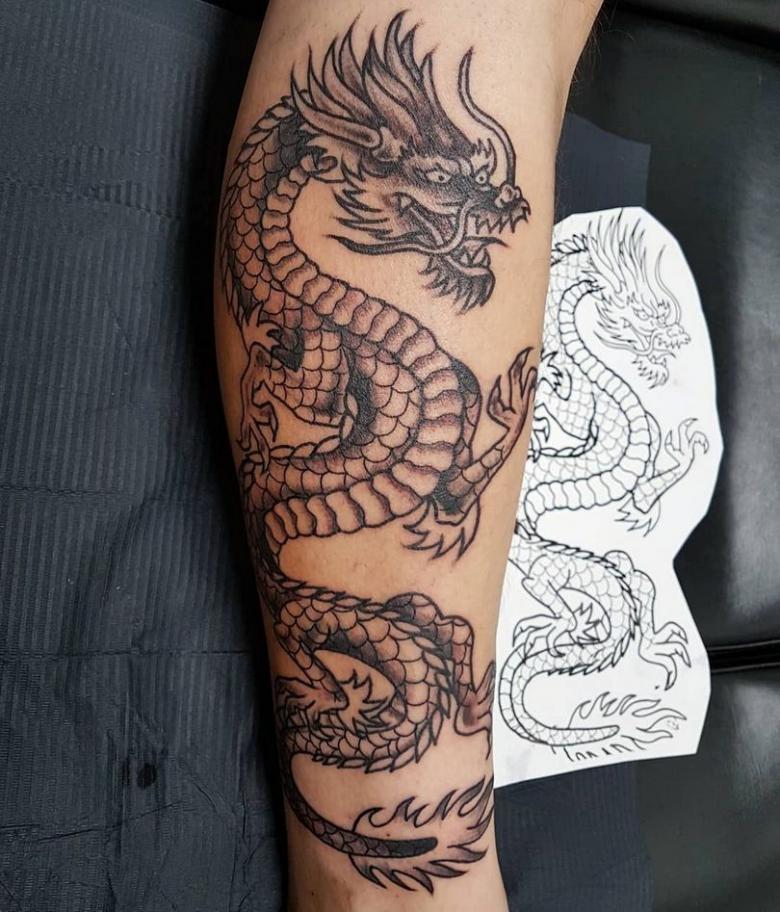
Yes, traditionally, men more often choose aggressive images of dragons: claws, swollen nostrils, fire and predatory grin. All the more so, men can afford larger tattoos, as society is more loyal to large-scale male tattoos than to female ones. In a large-scale version, dragon tattoos are even more formidable and powerful.
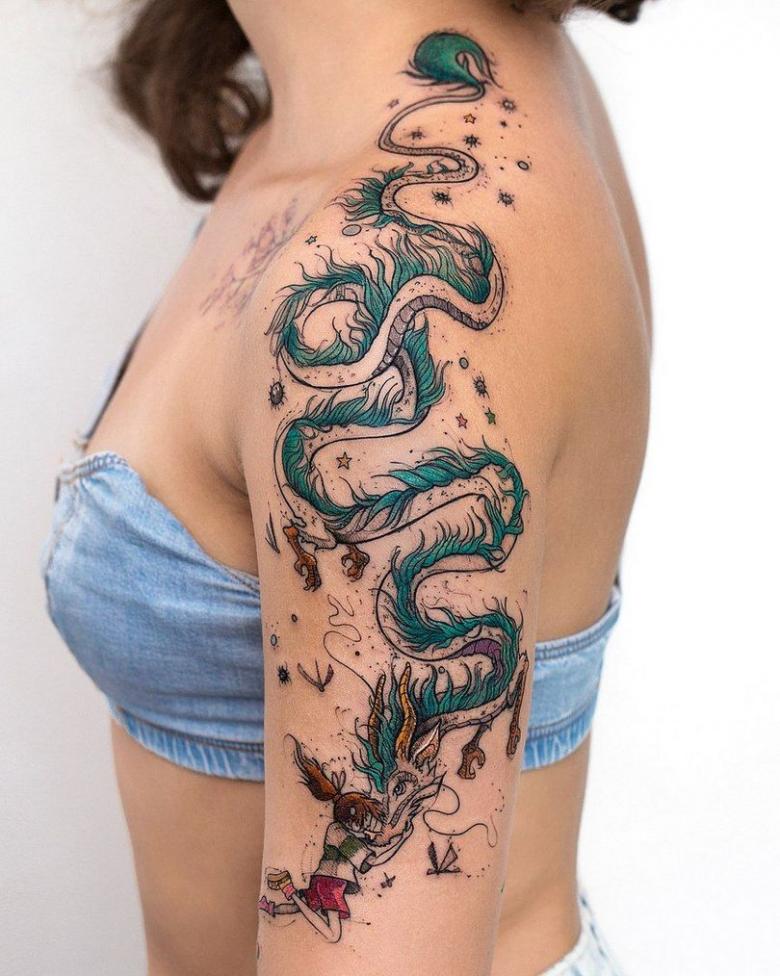
Women are less likely to choose crude, overt aggression. Rather they are determined to play up the flexibility and grace of mythical animals in their tattoos. Girls romanticize the image of the winged predator, adding color and pictorial details to it.
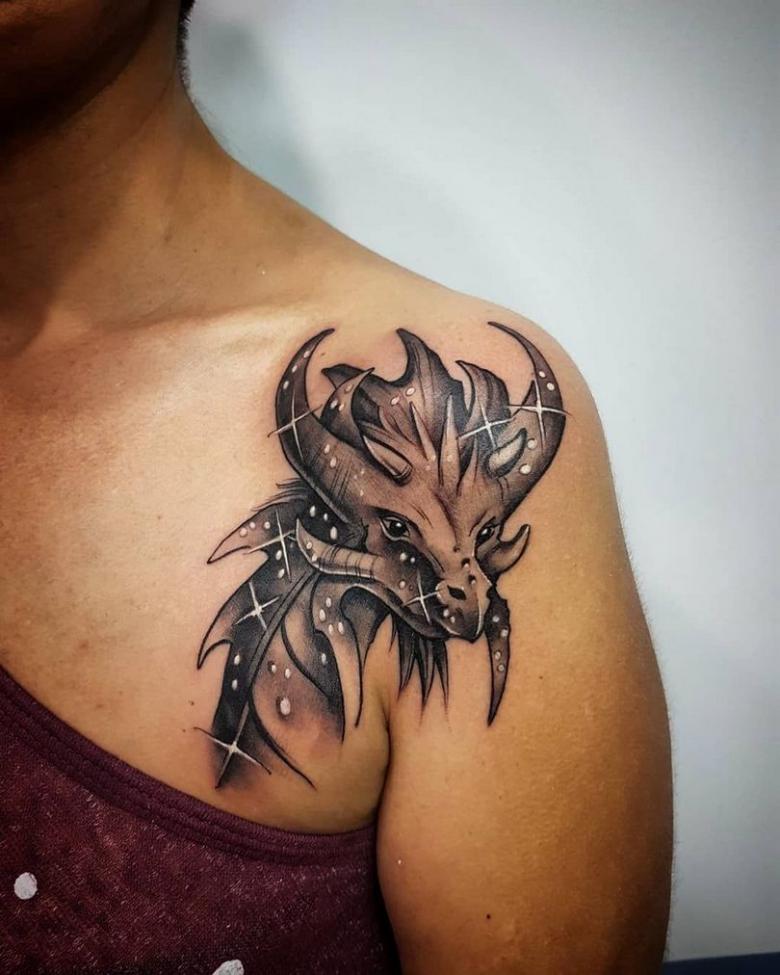
Working with a master
In the case of the dragon tattoo, the masters recommend to start from the localization on the body and the allotted area. Then it will be clear in what style it is best to choose the sketch. In the preliminary work, look at the photo to compare what place for a tattoo seems to you the most spectacular.

Popular locations:
- On the arm: forearm, shoulder, hand, wrist
- Leg: hip, calves, back of the foot
- On back;
- On chest;
- On the neck and collarbone area.
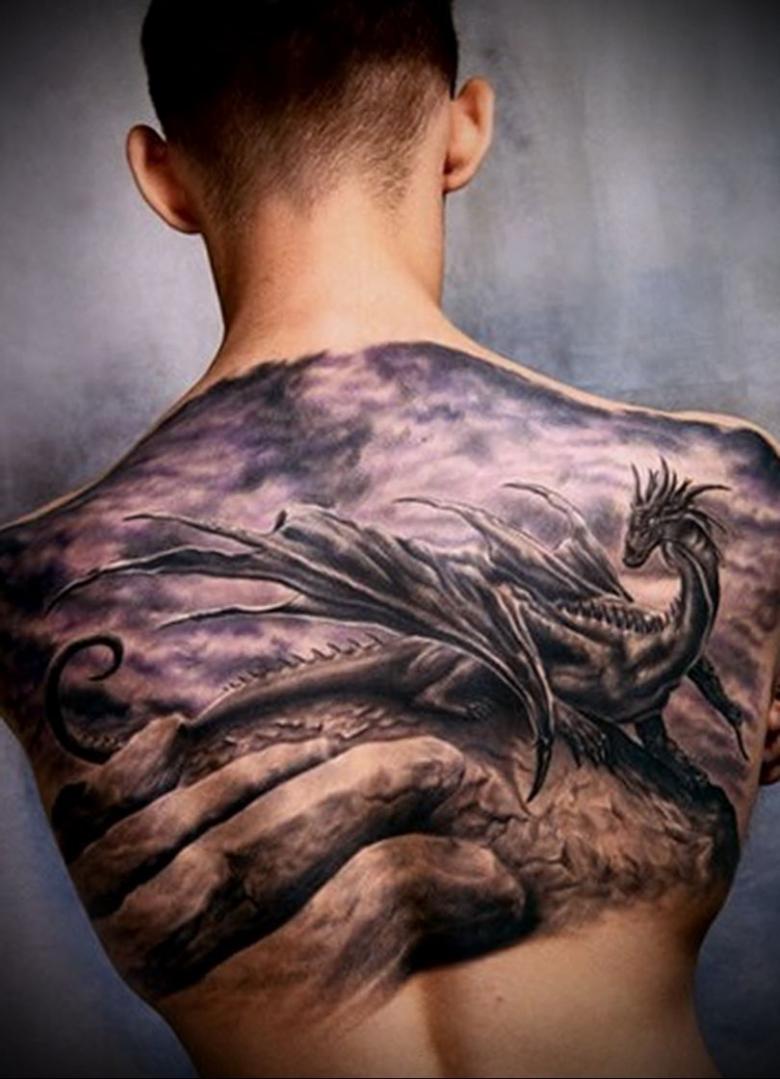
The most interesting look tattoos, in which there is dynamics and volume: for example, the tail curls in rings, enveloping the limb or narrow wrist, or powerful leathery wings spread over the entire area of the shoulder blades.
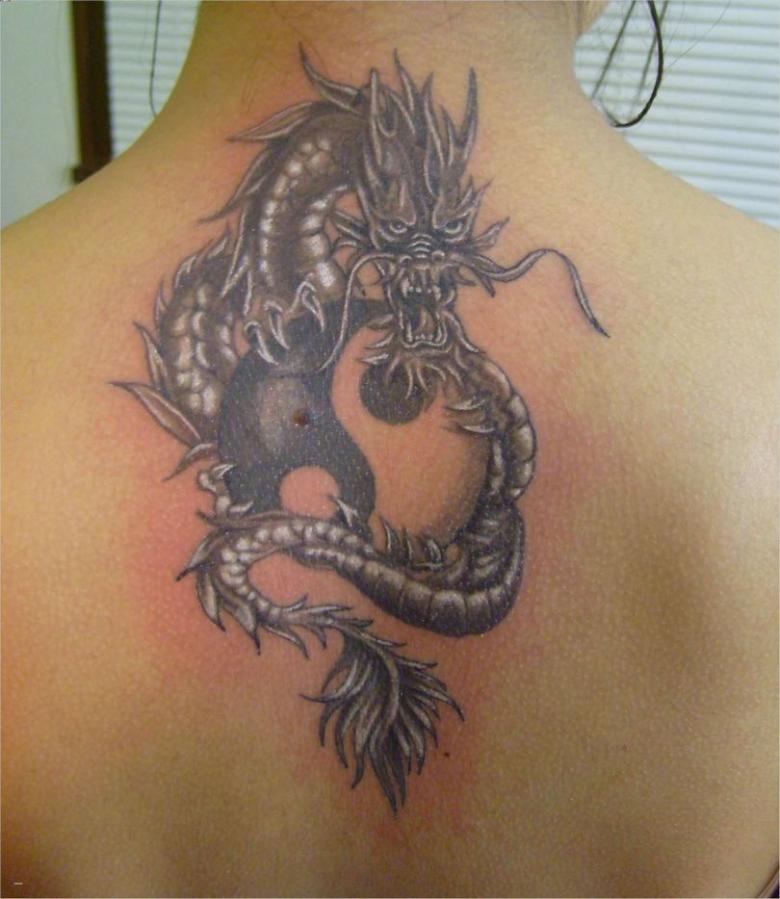
Tattoo, filled with energy, gives inspiration and inner strength to its owner.

